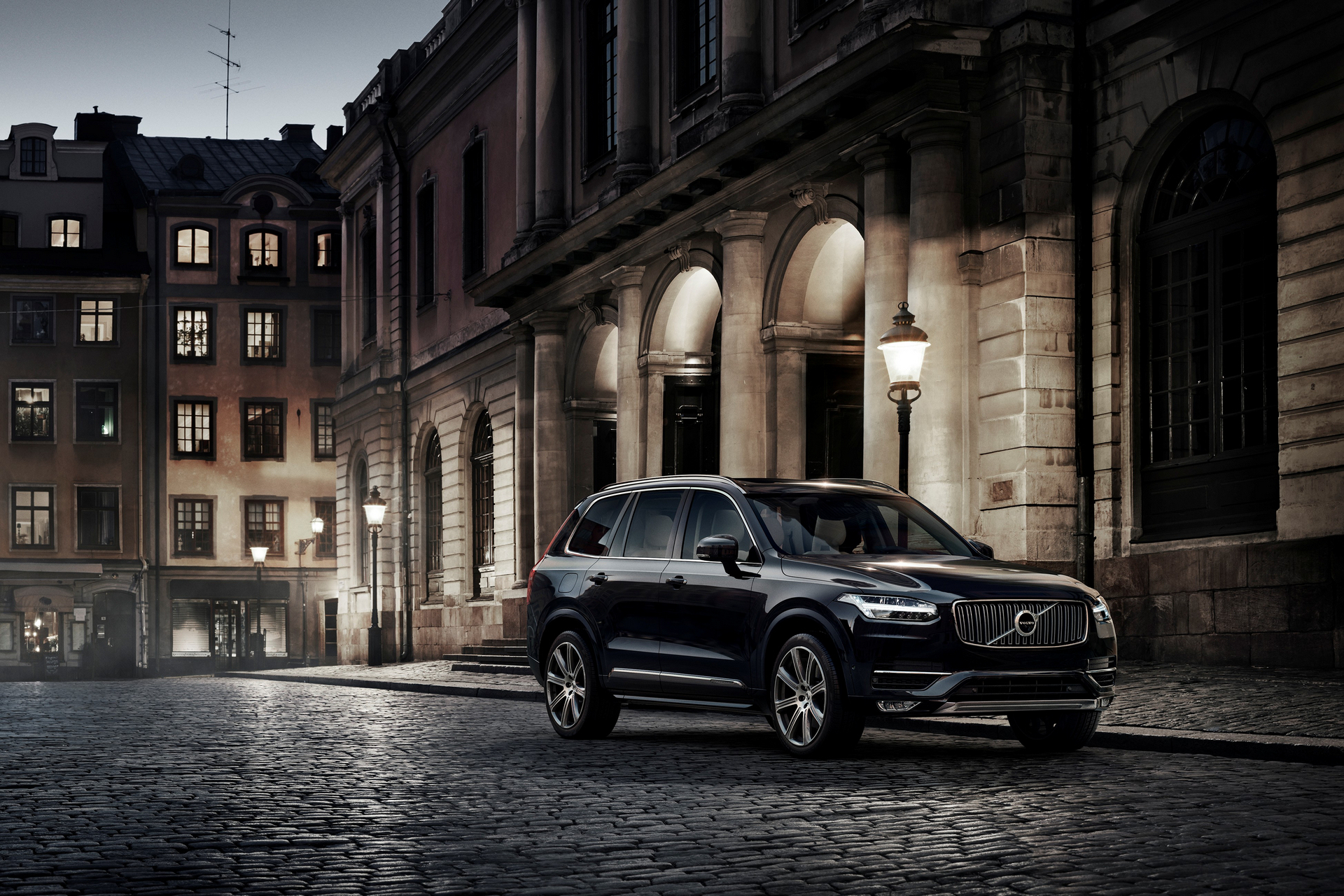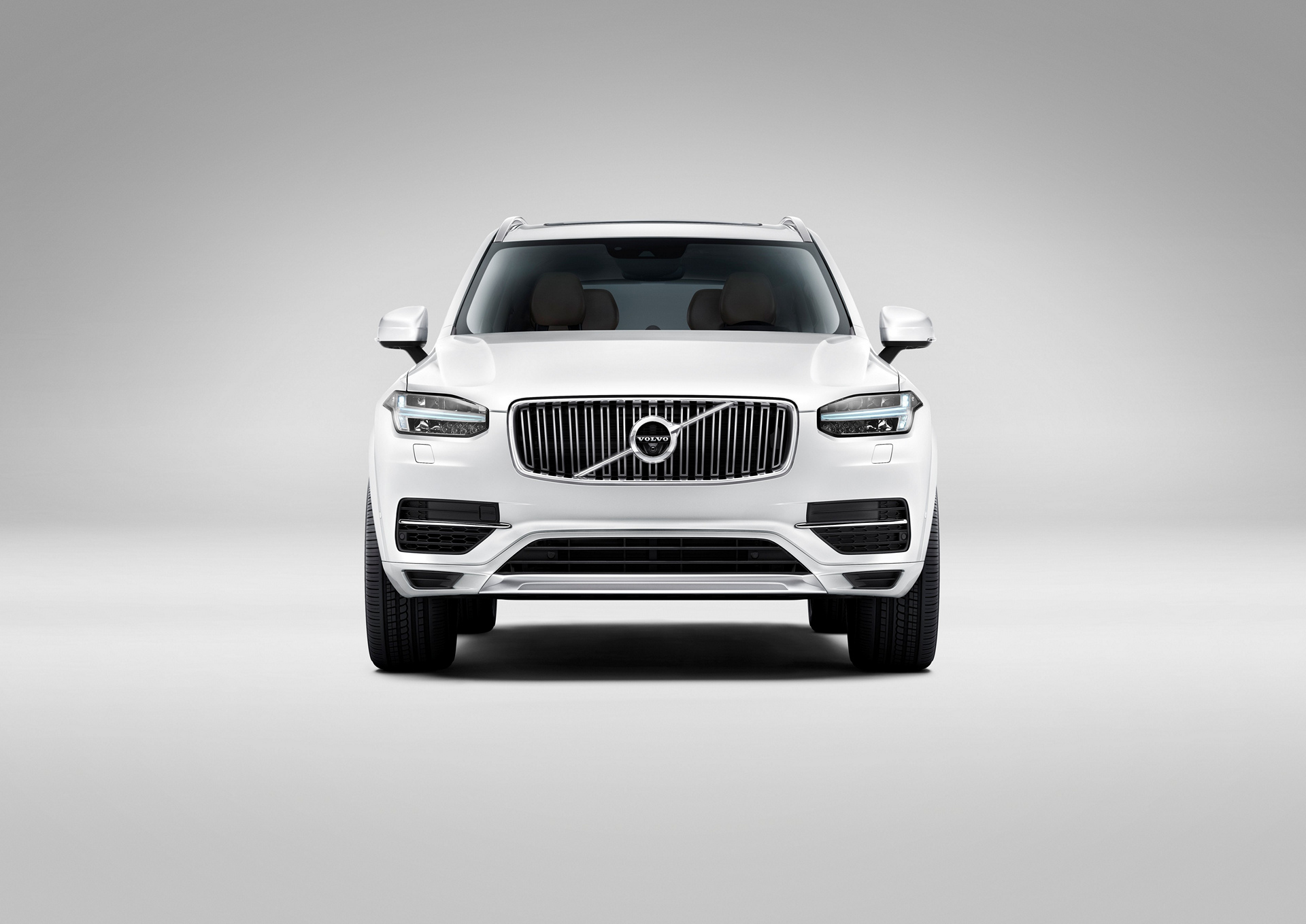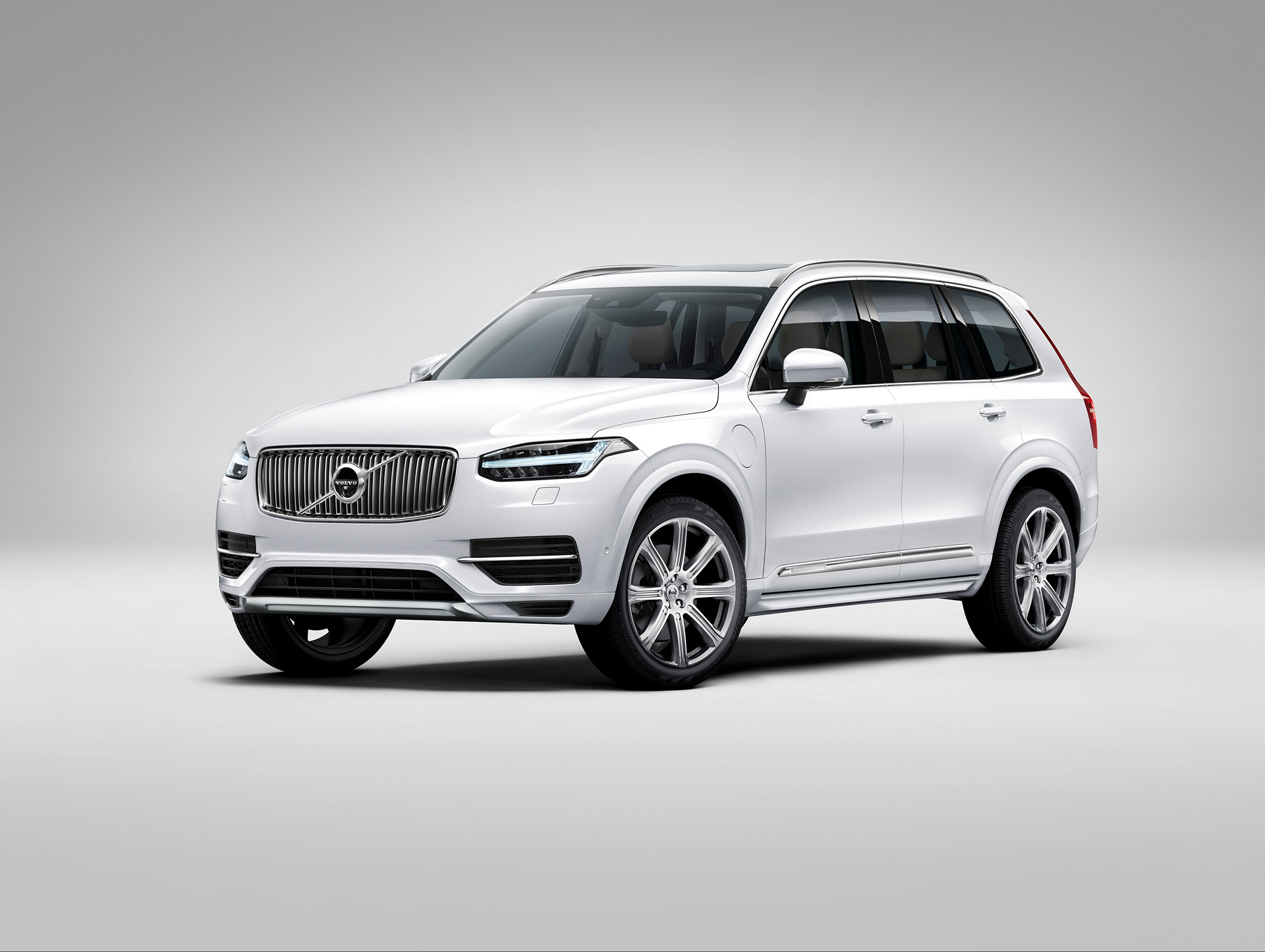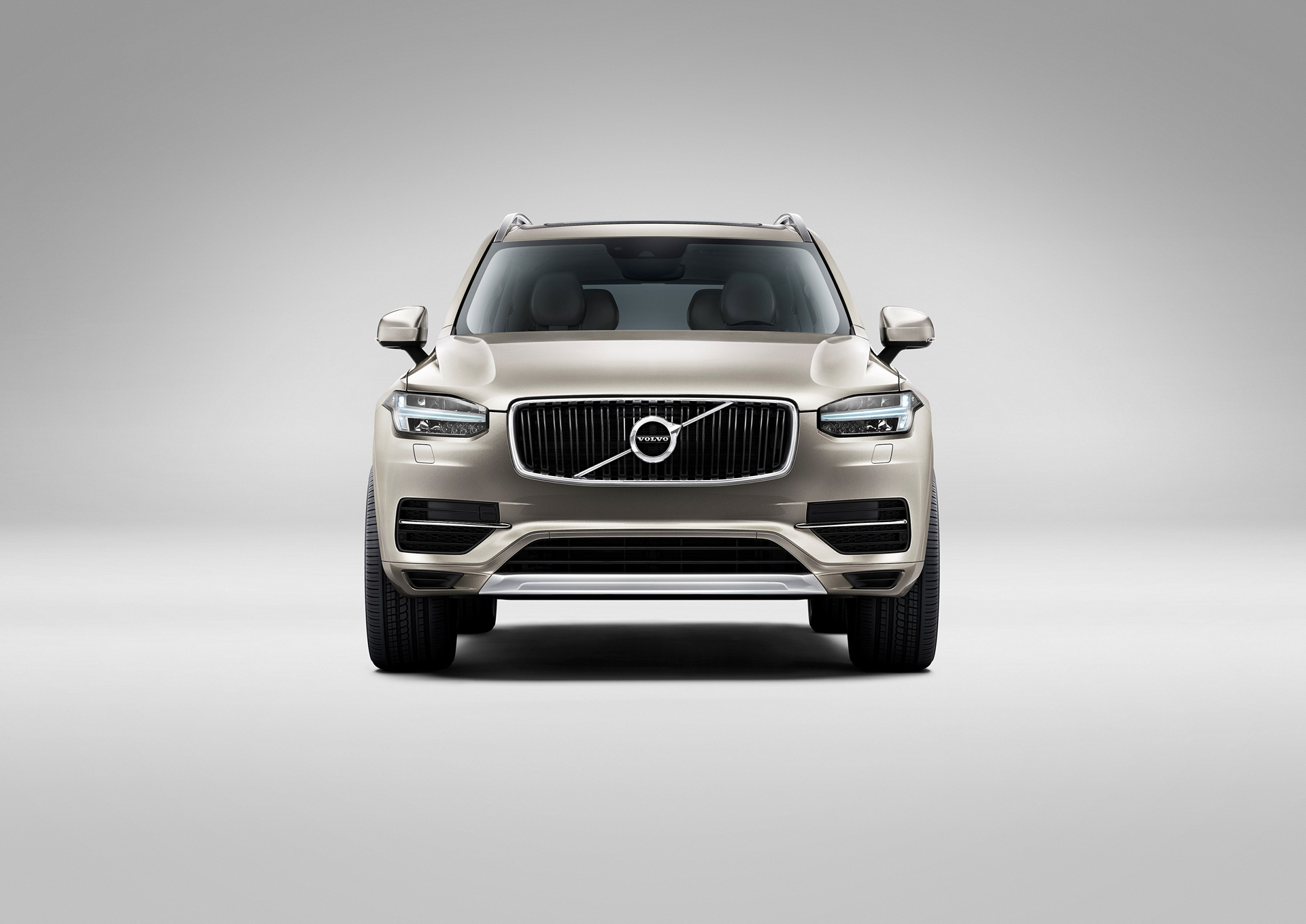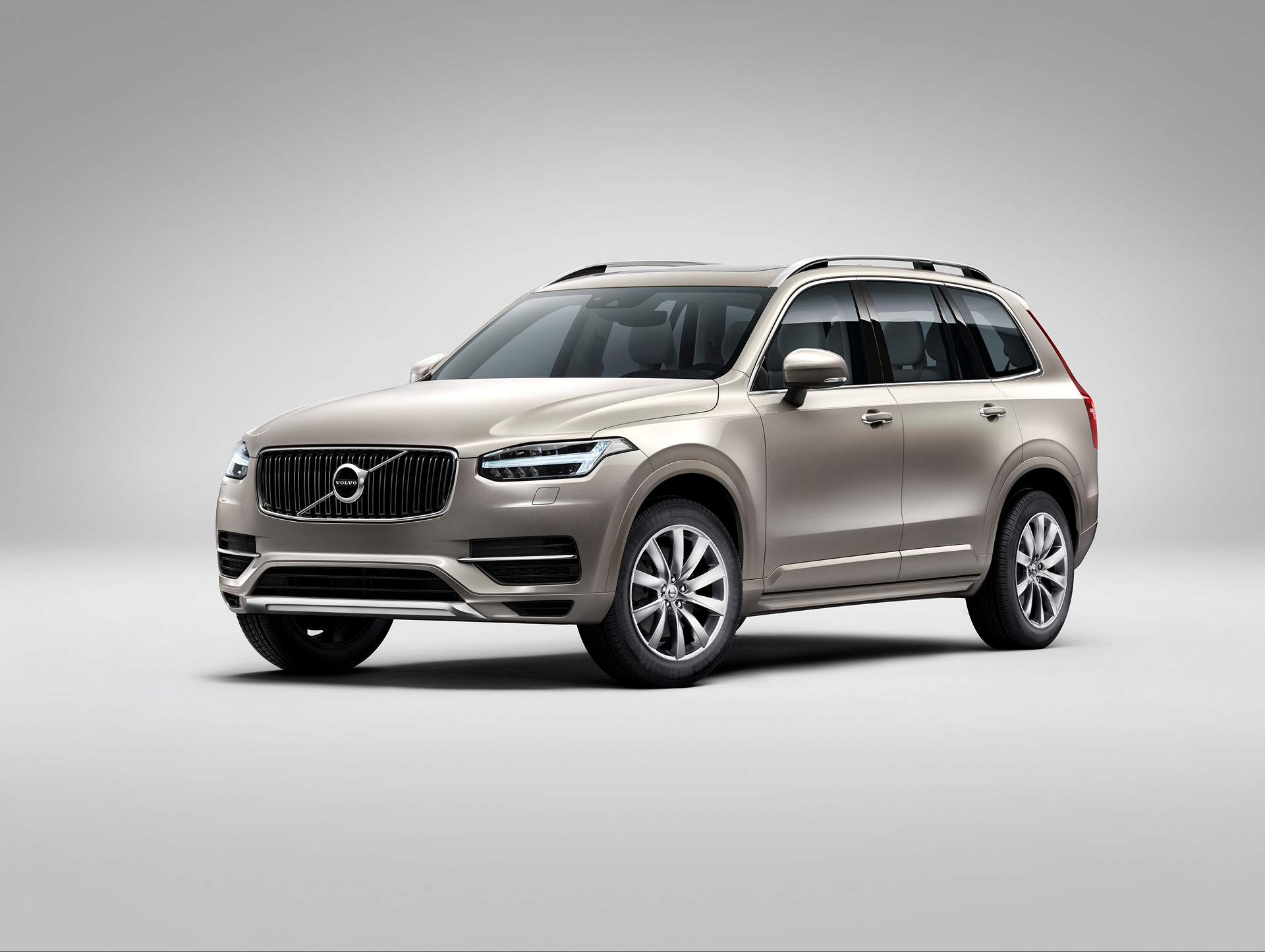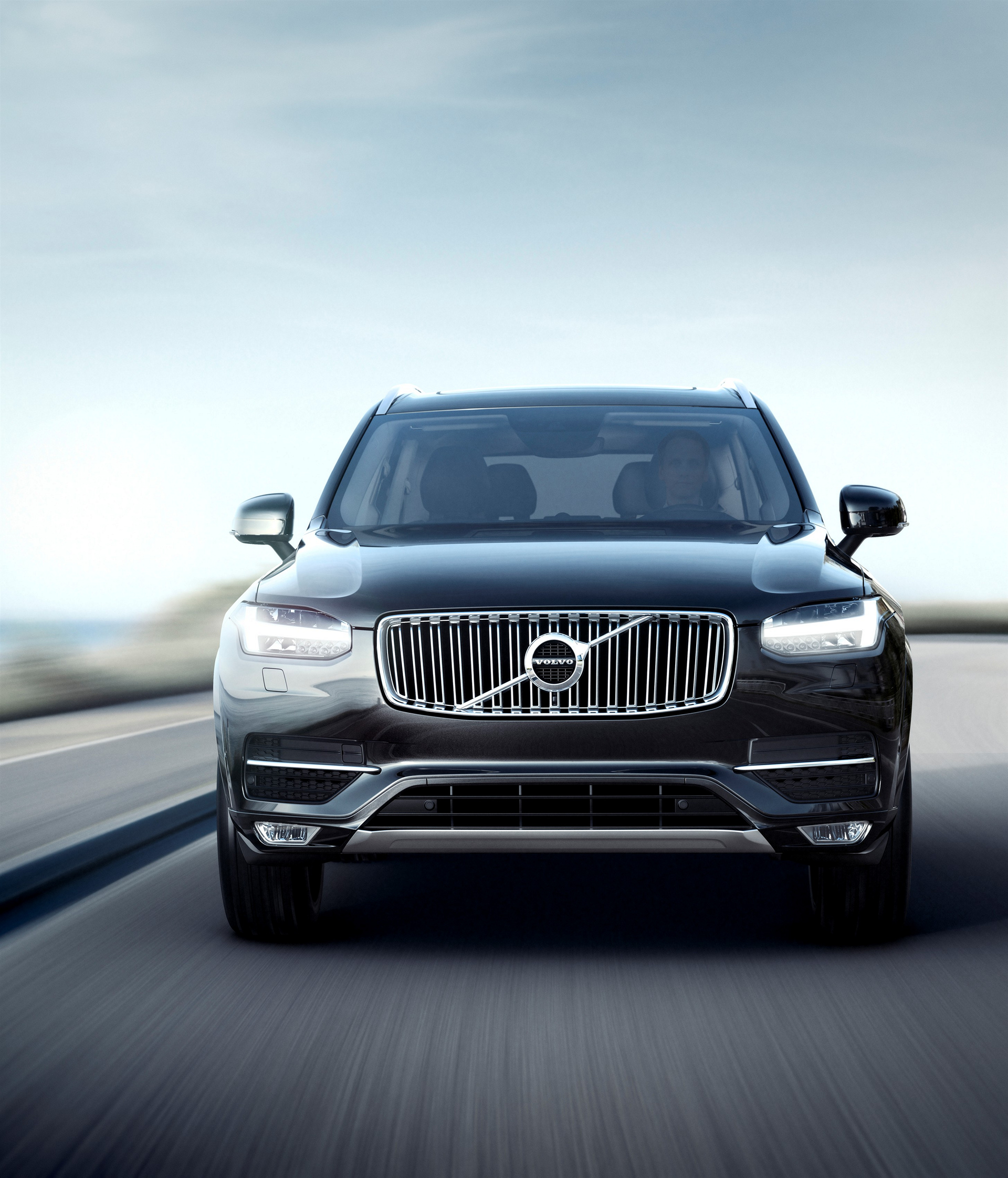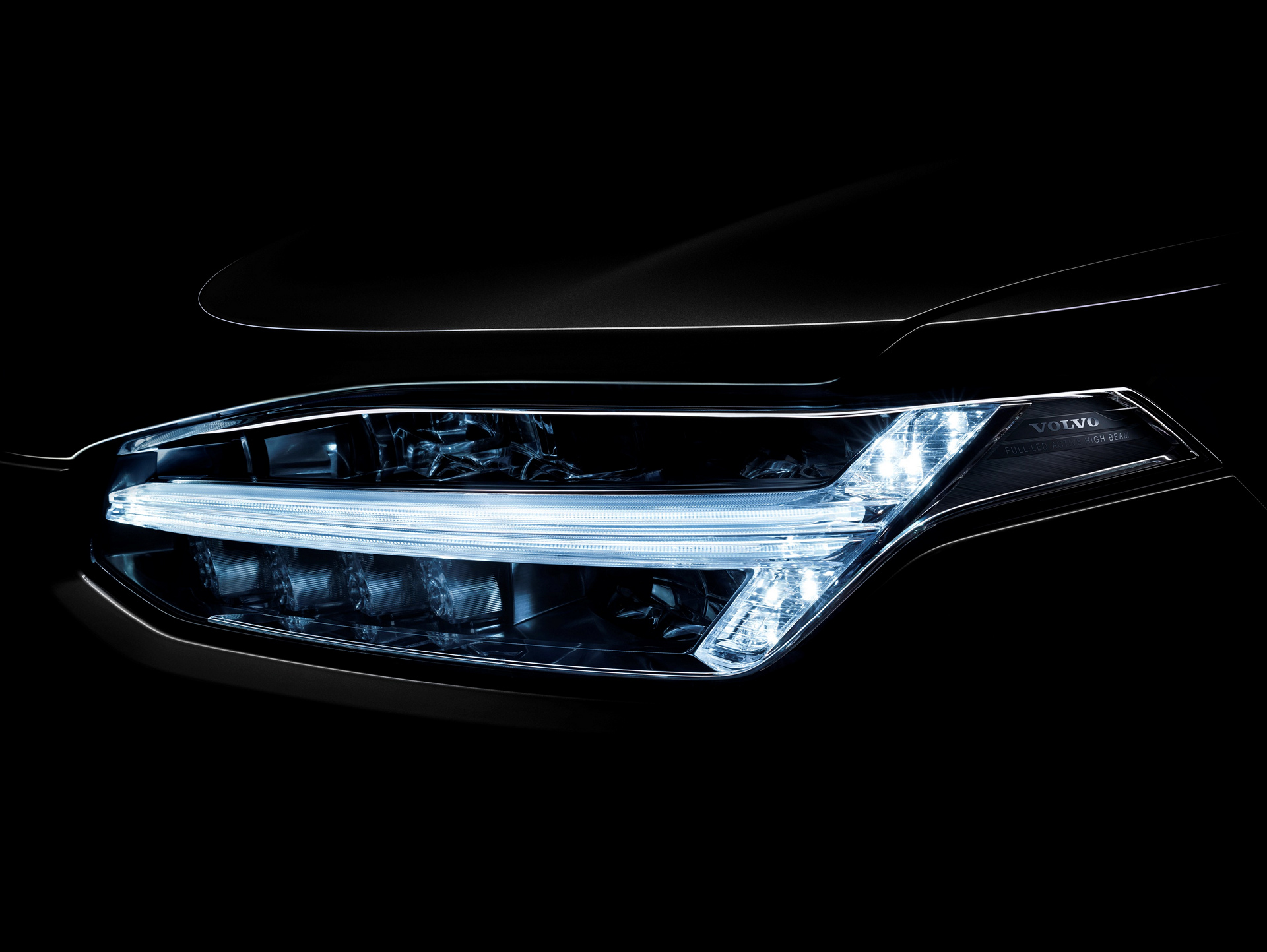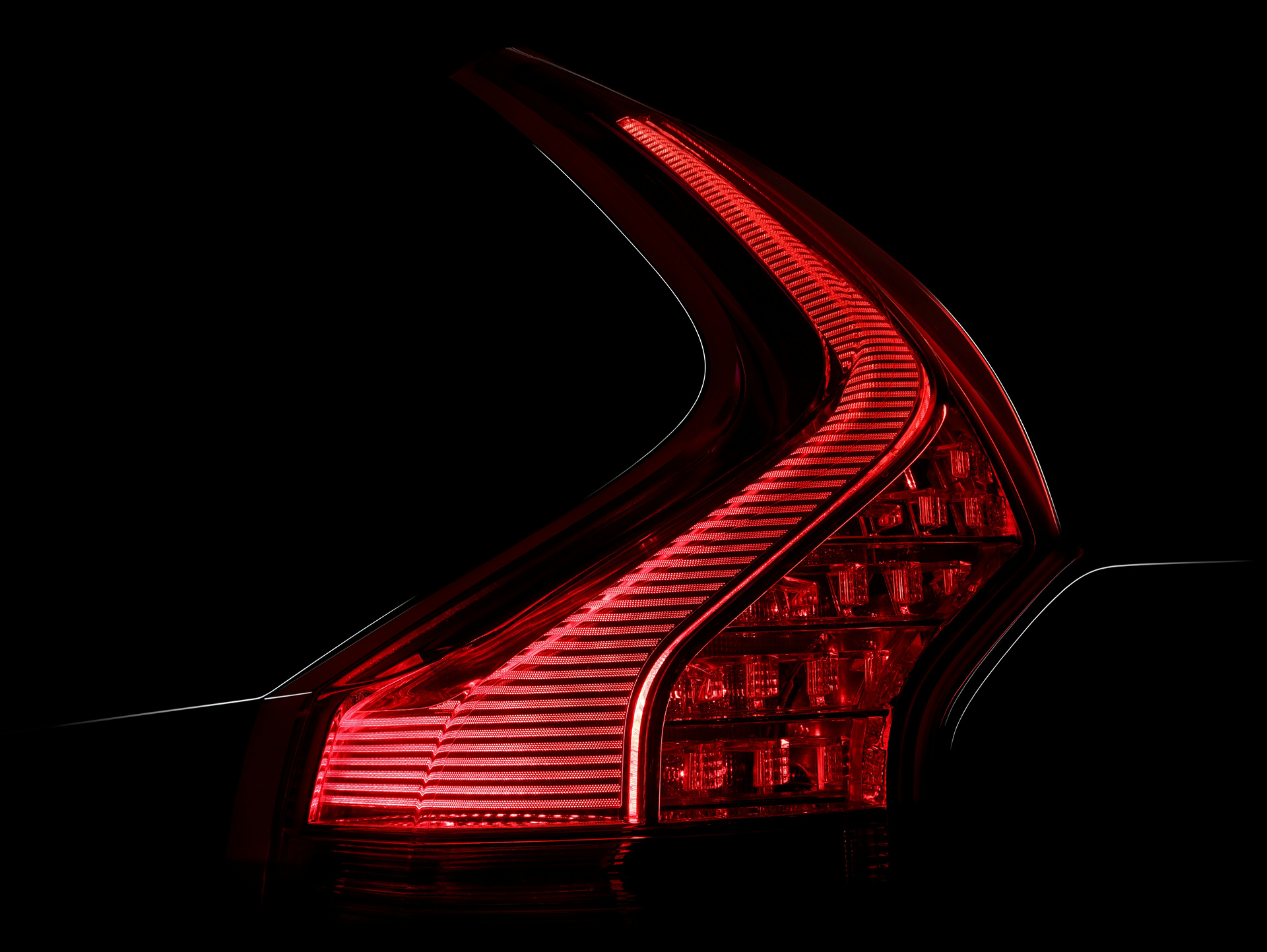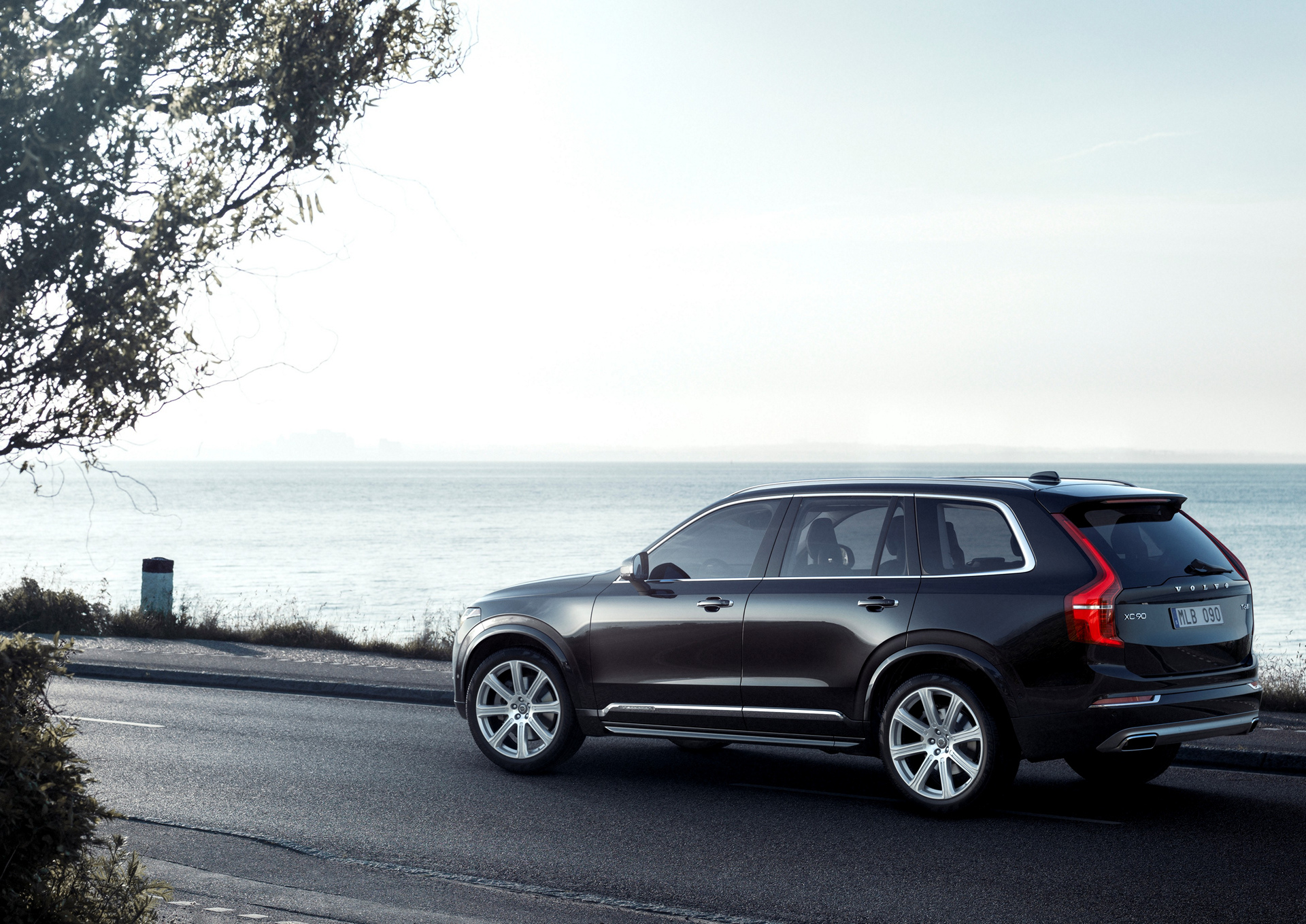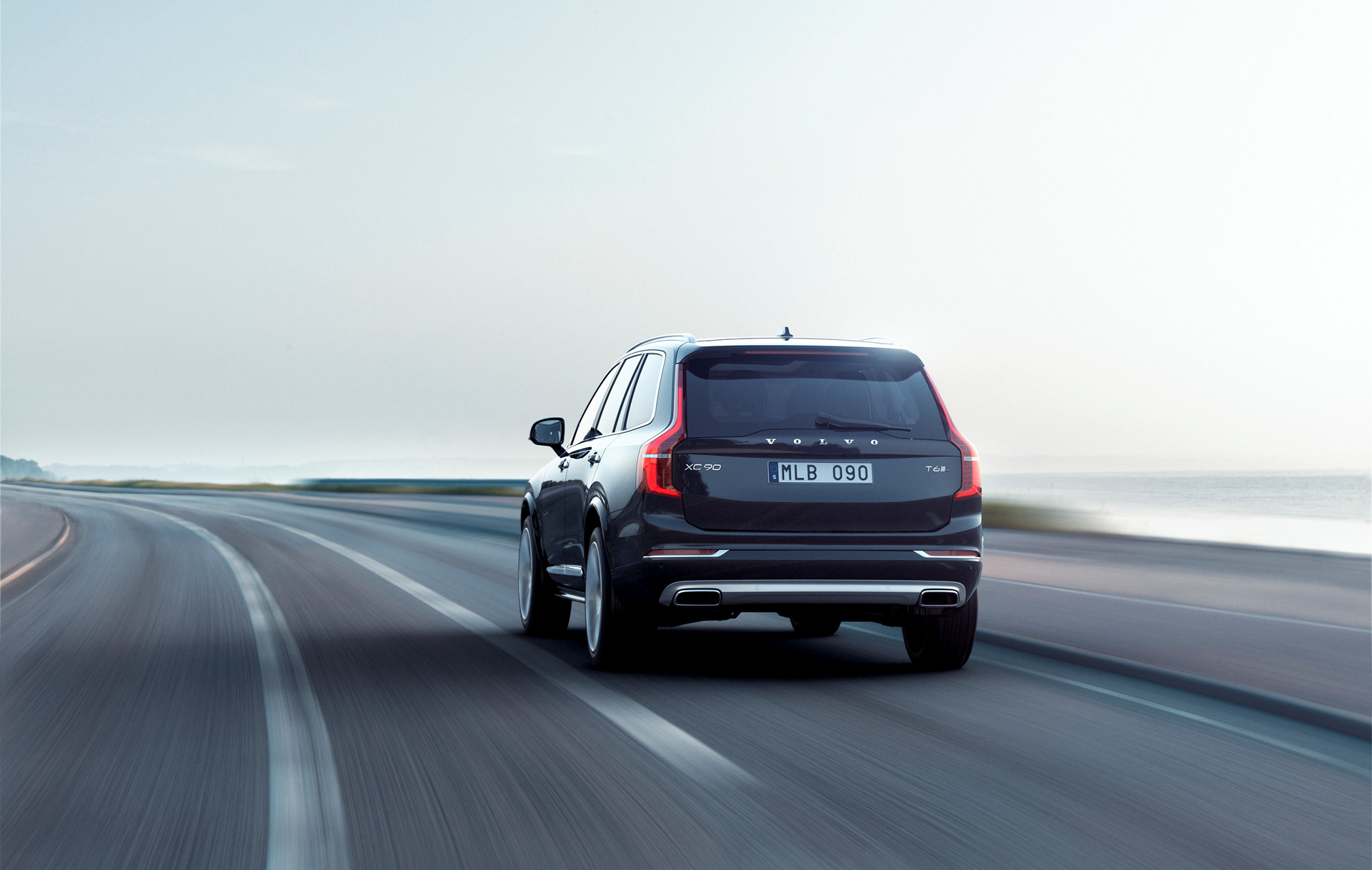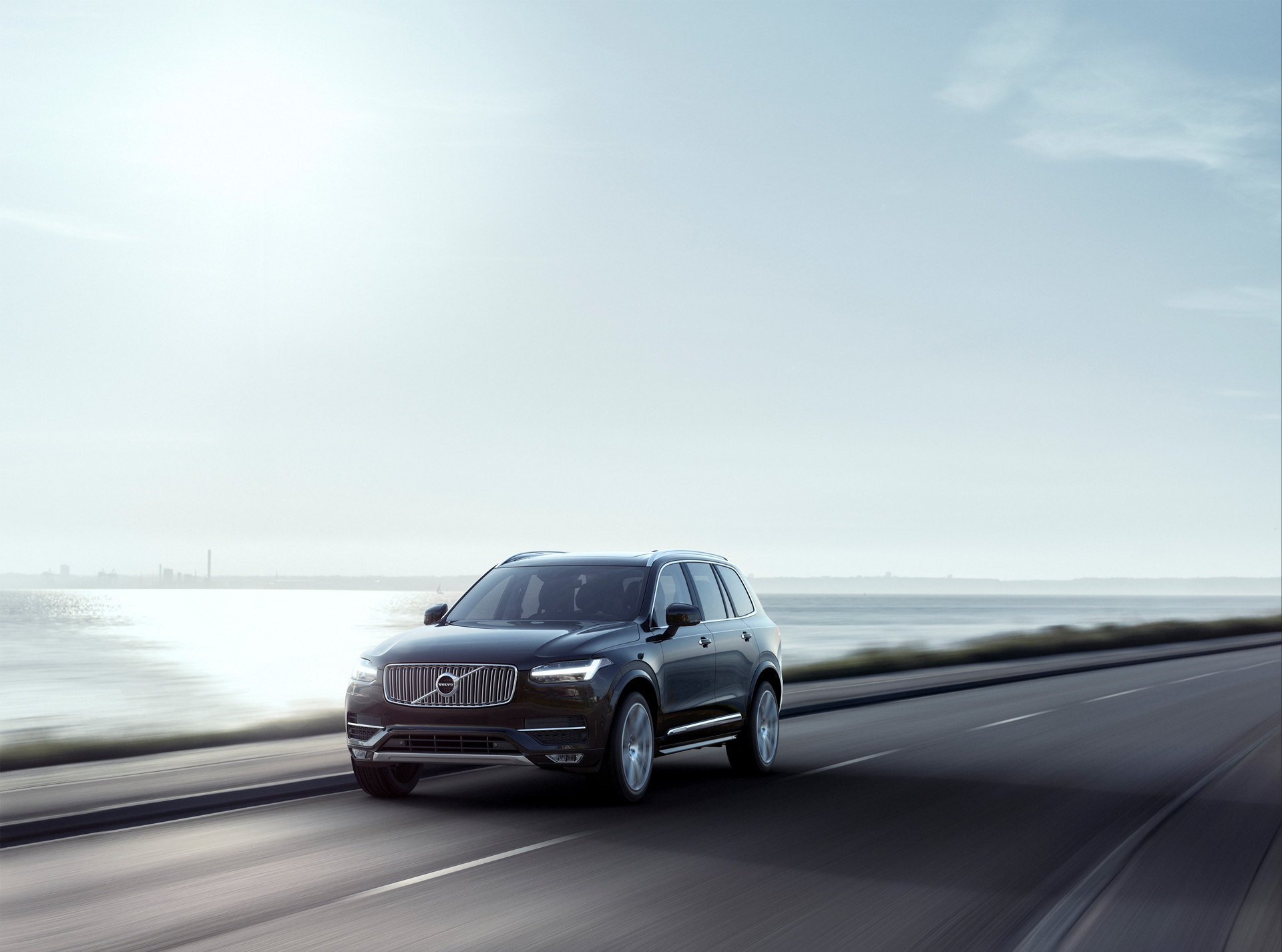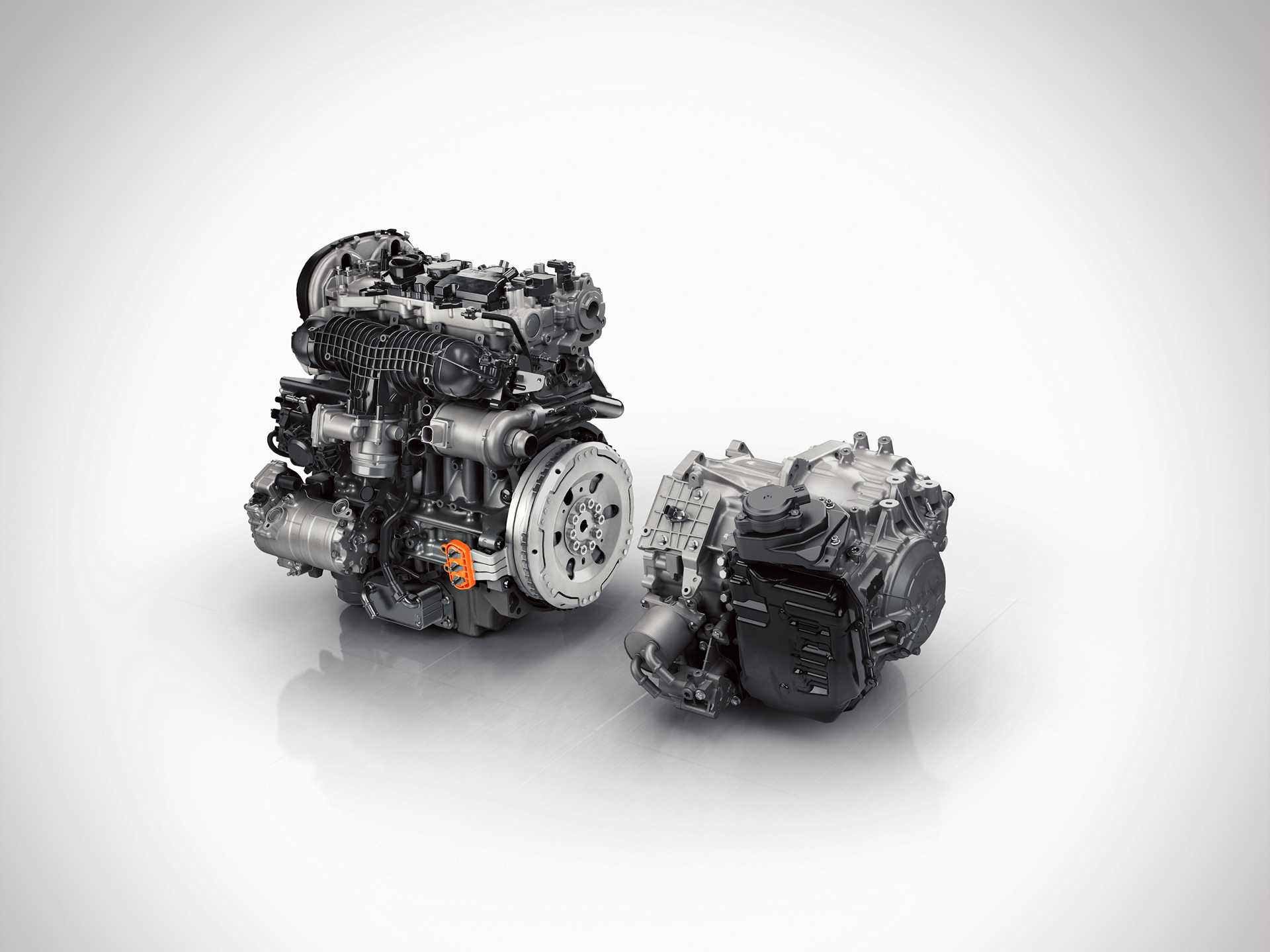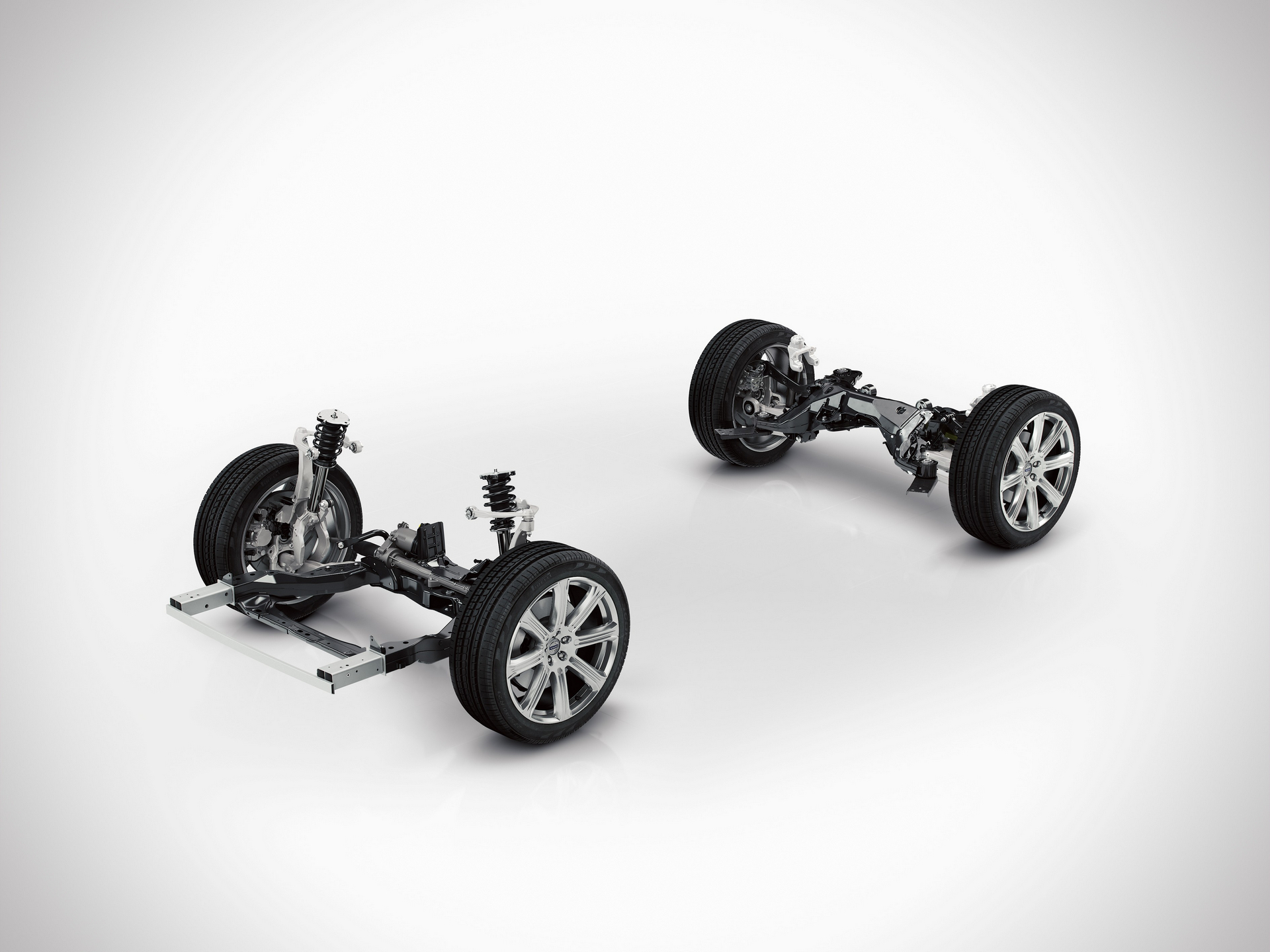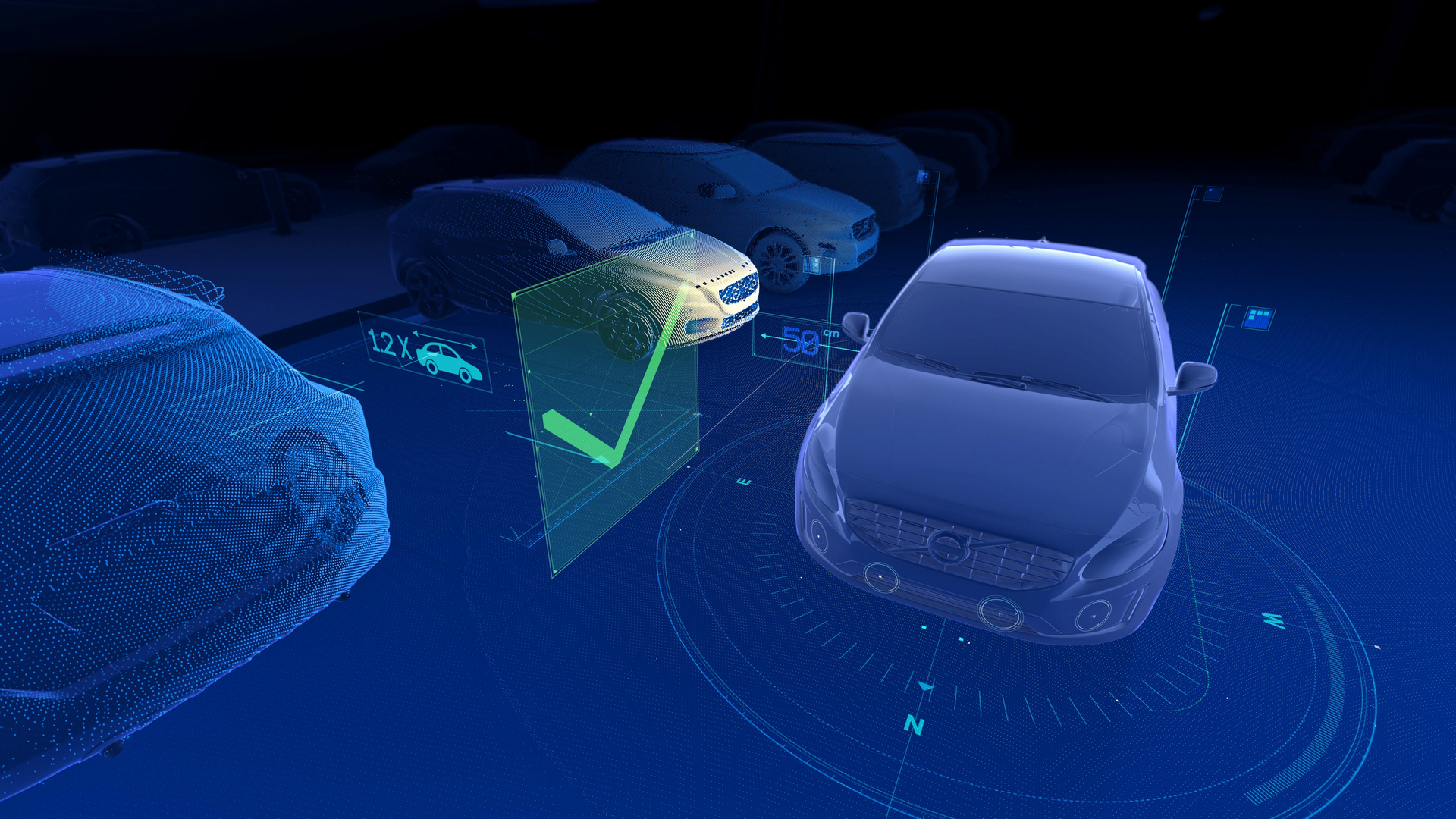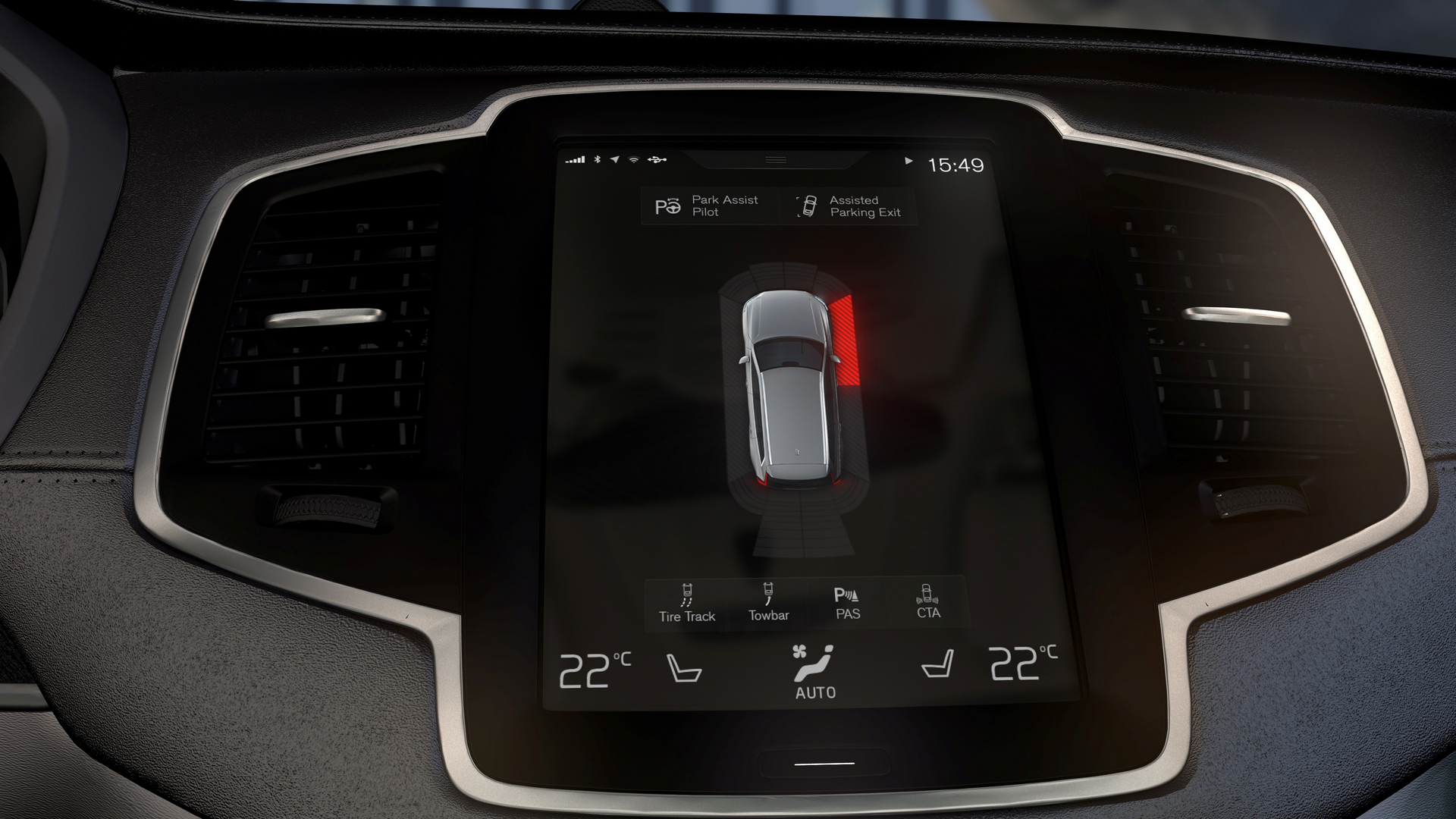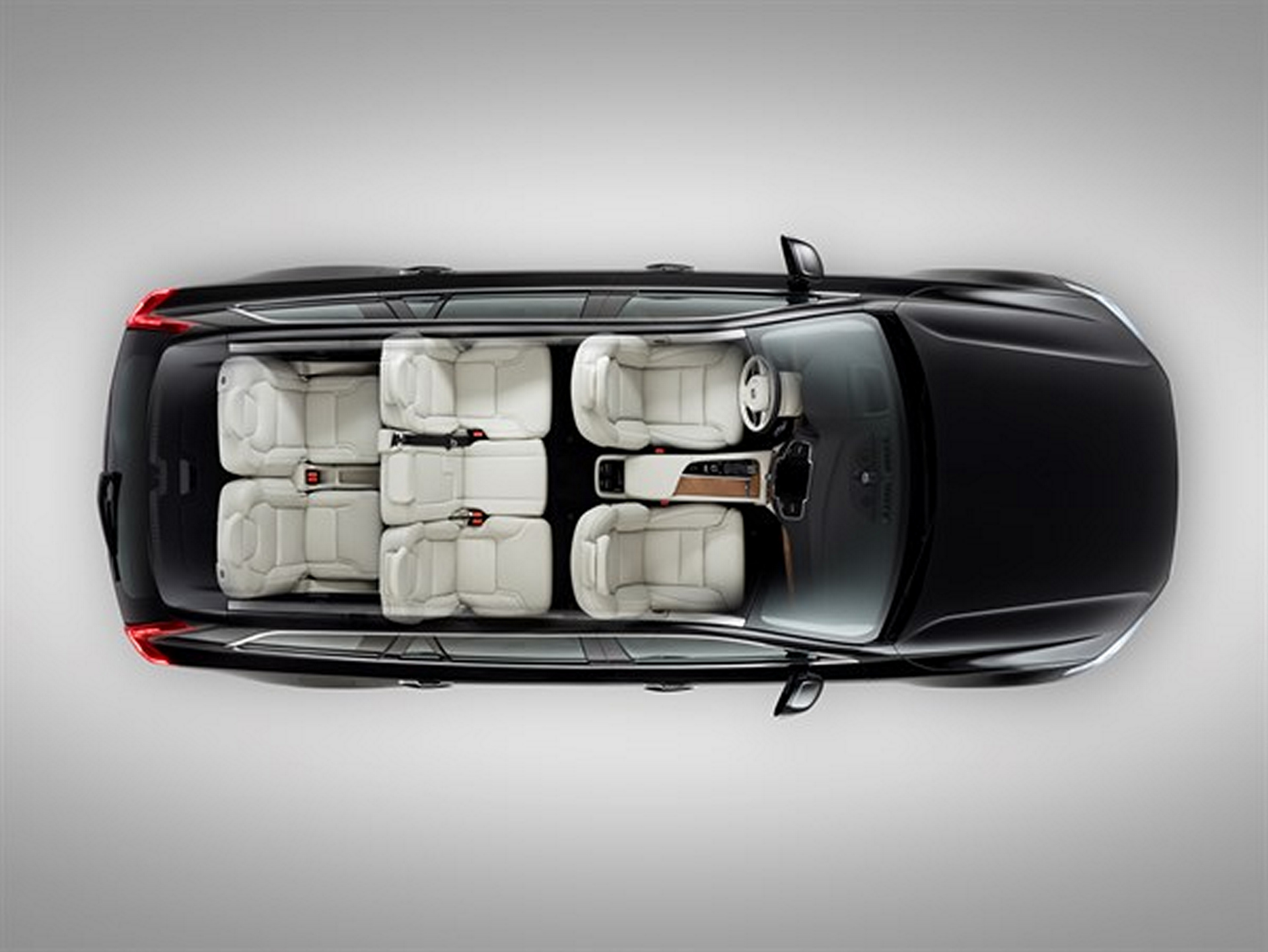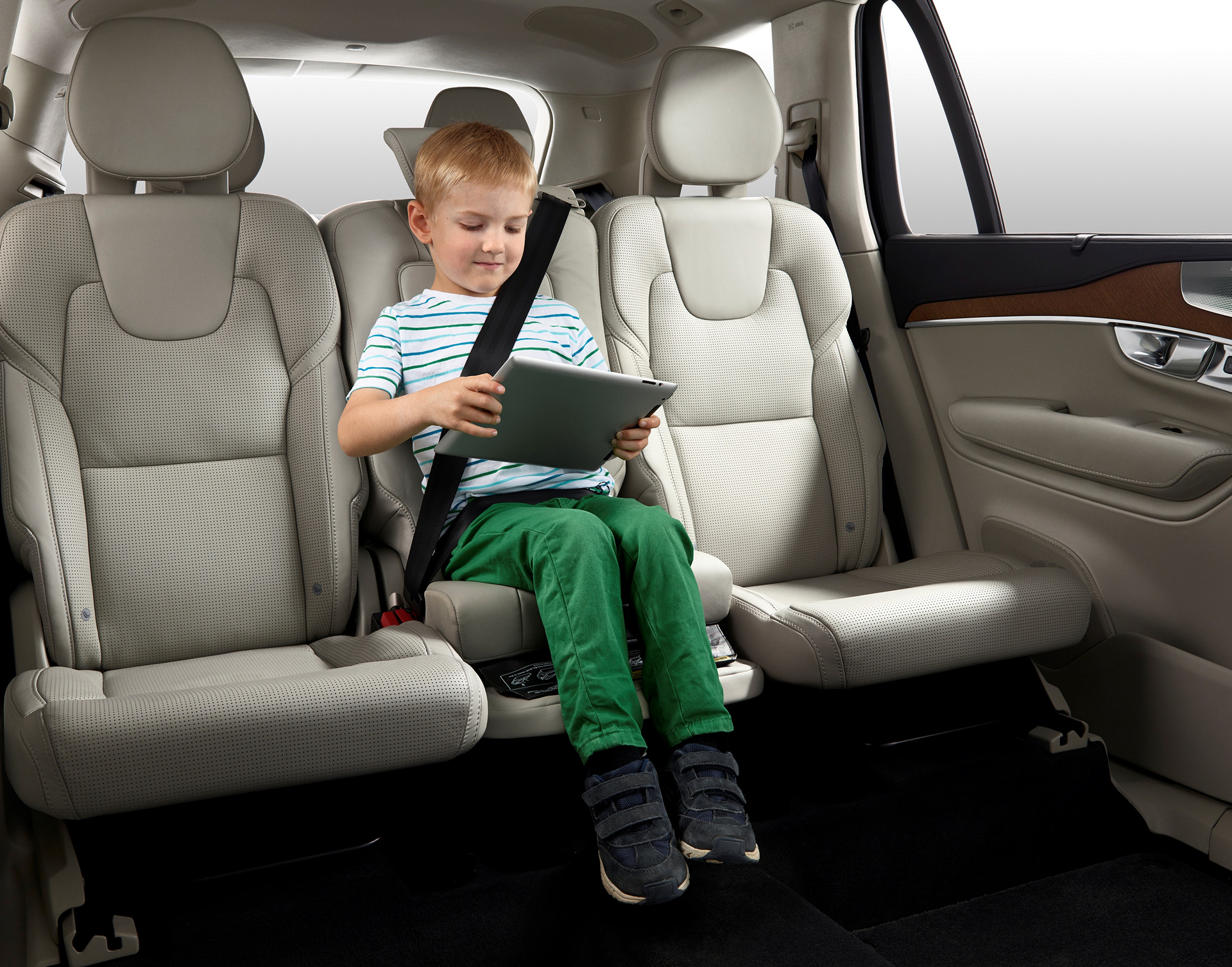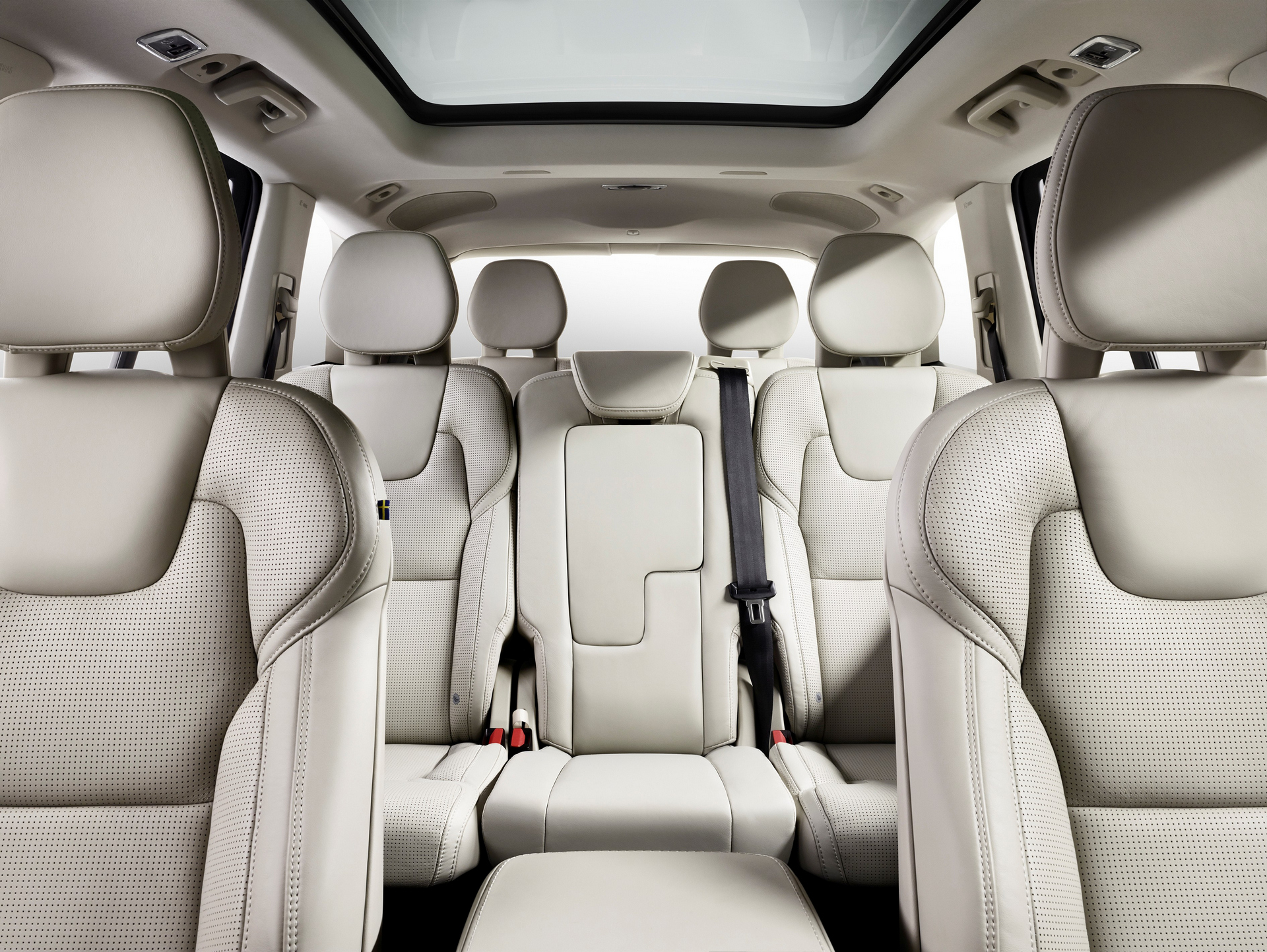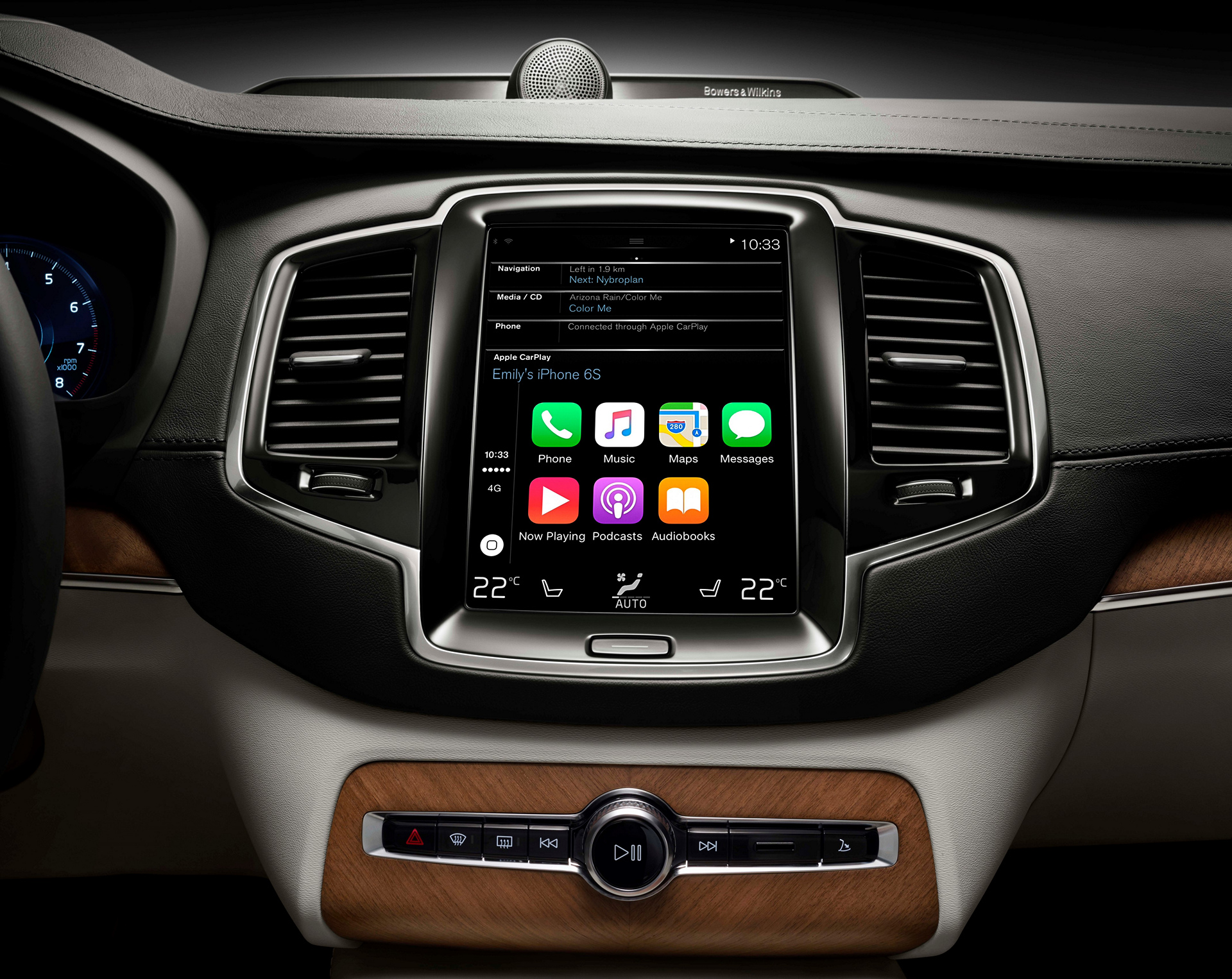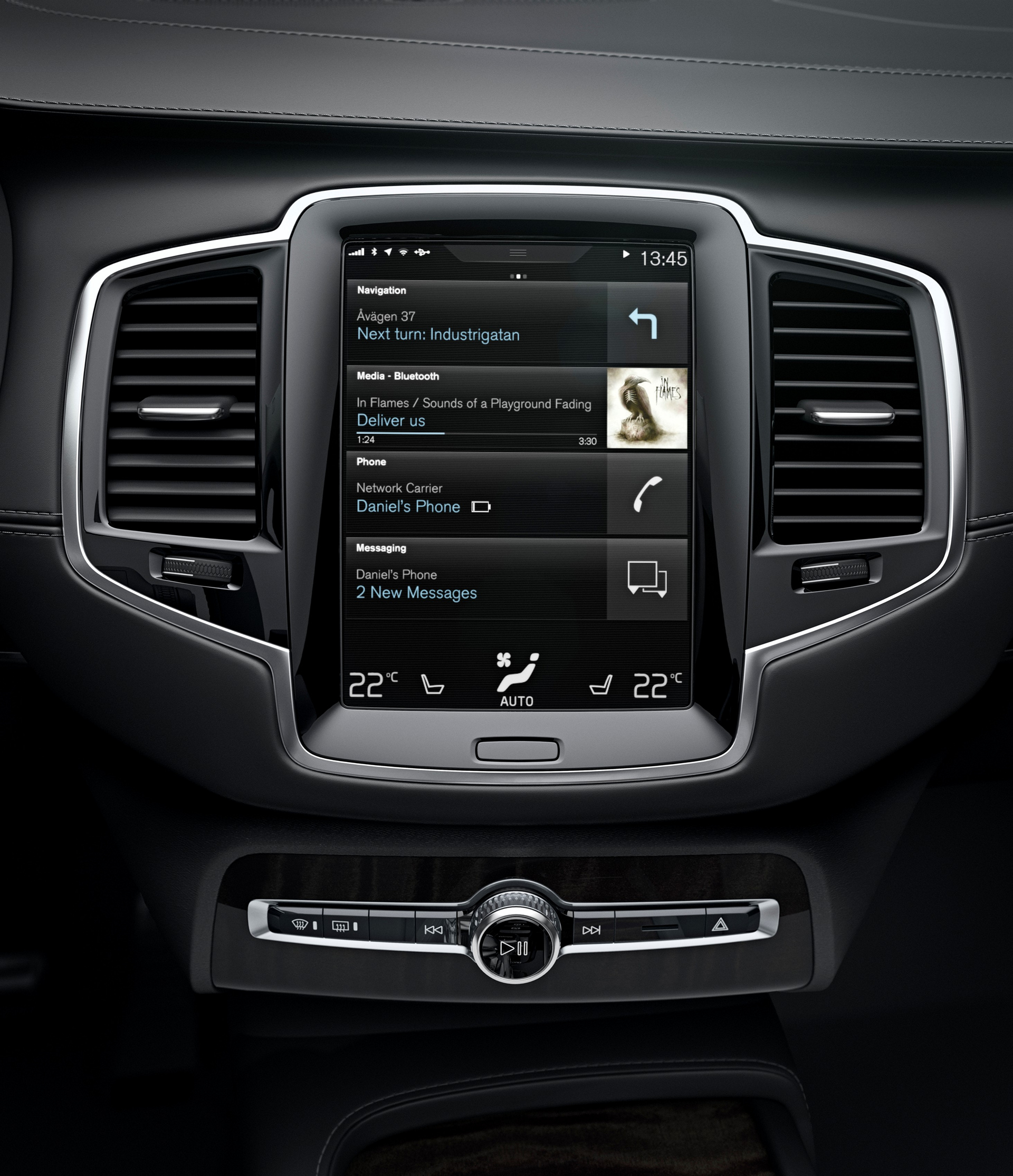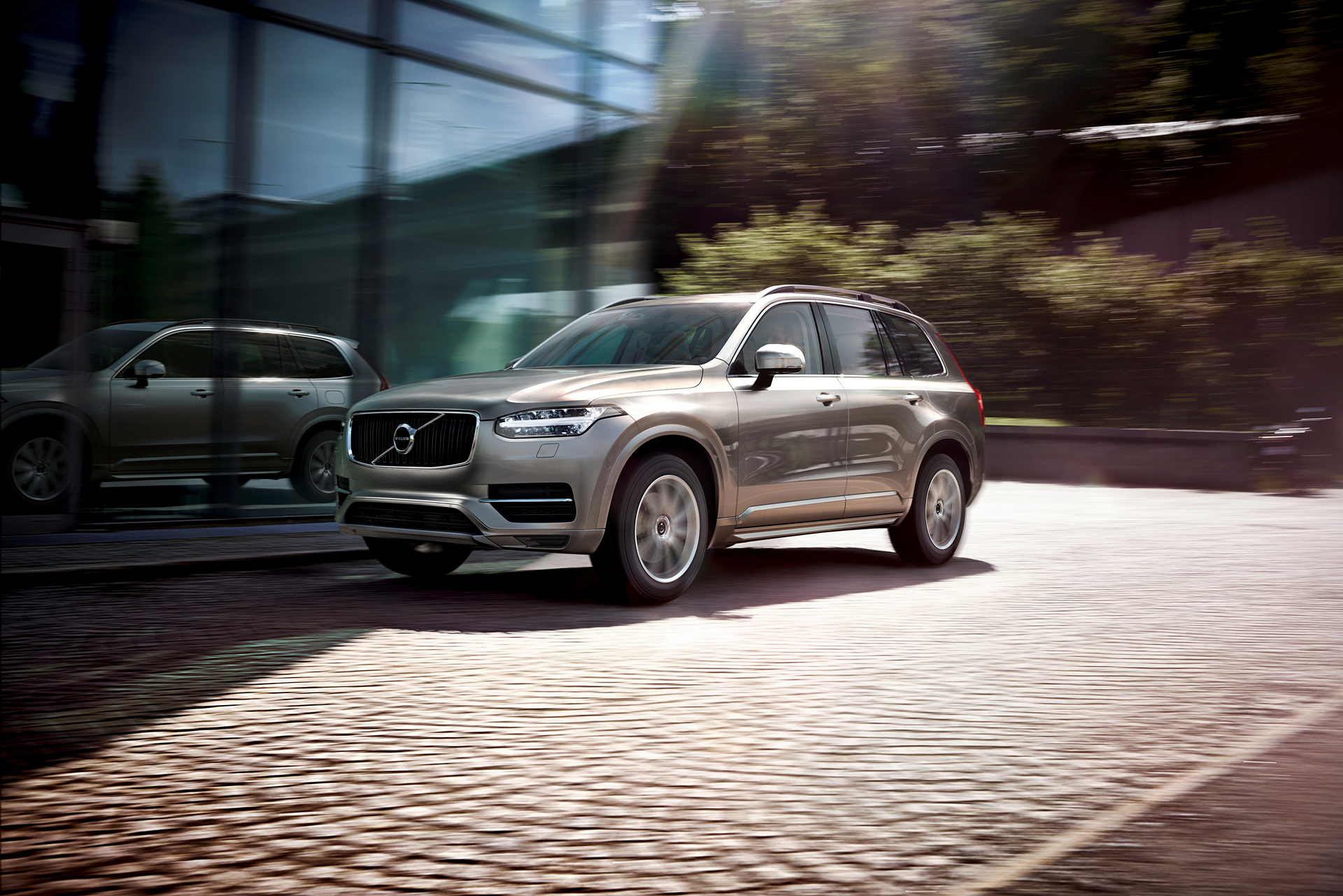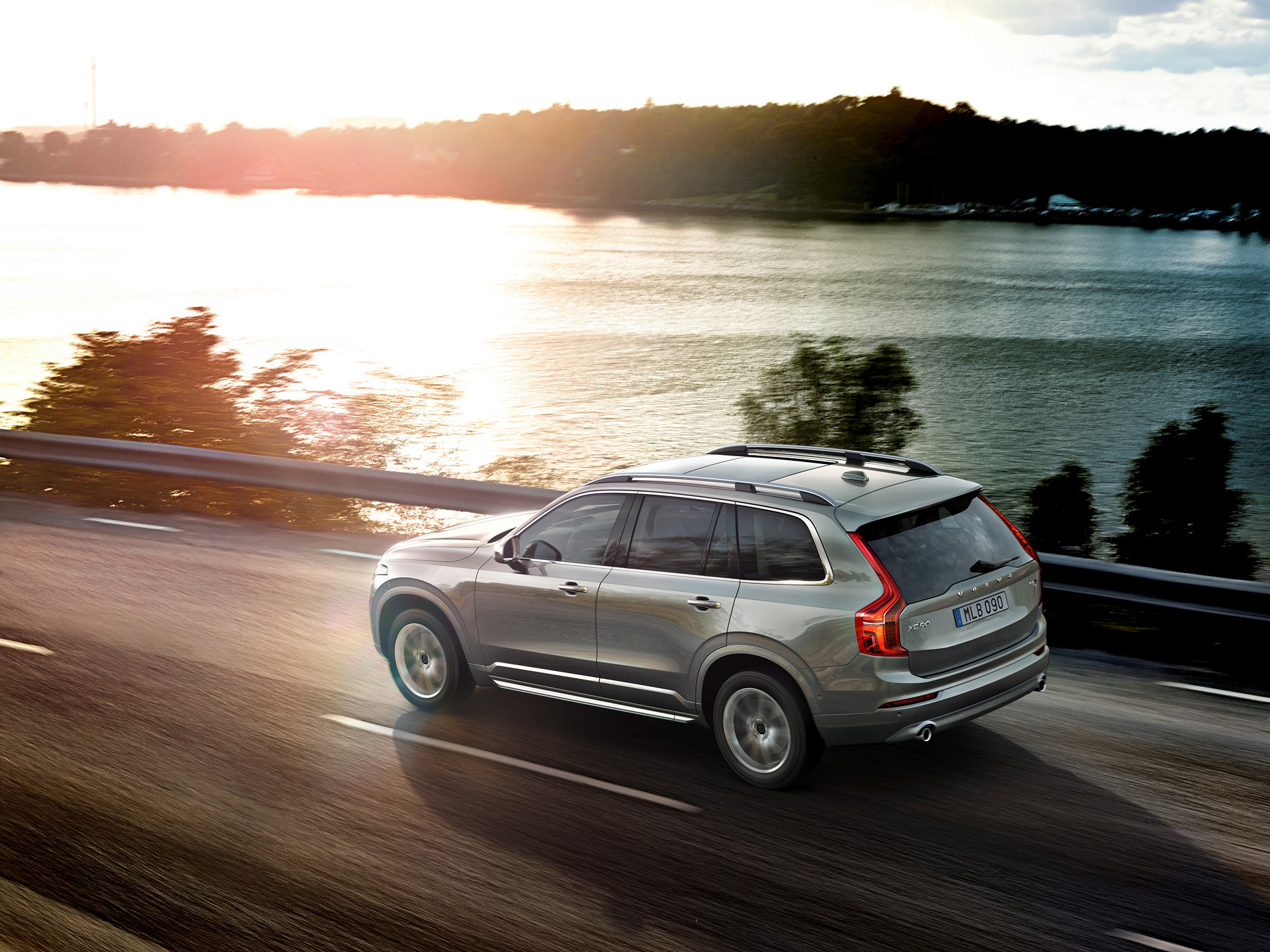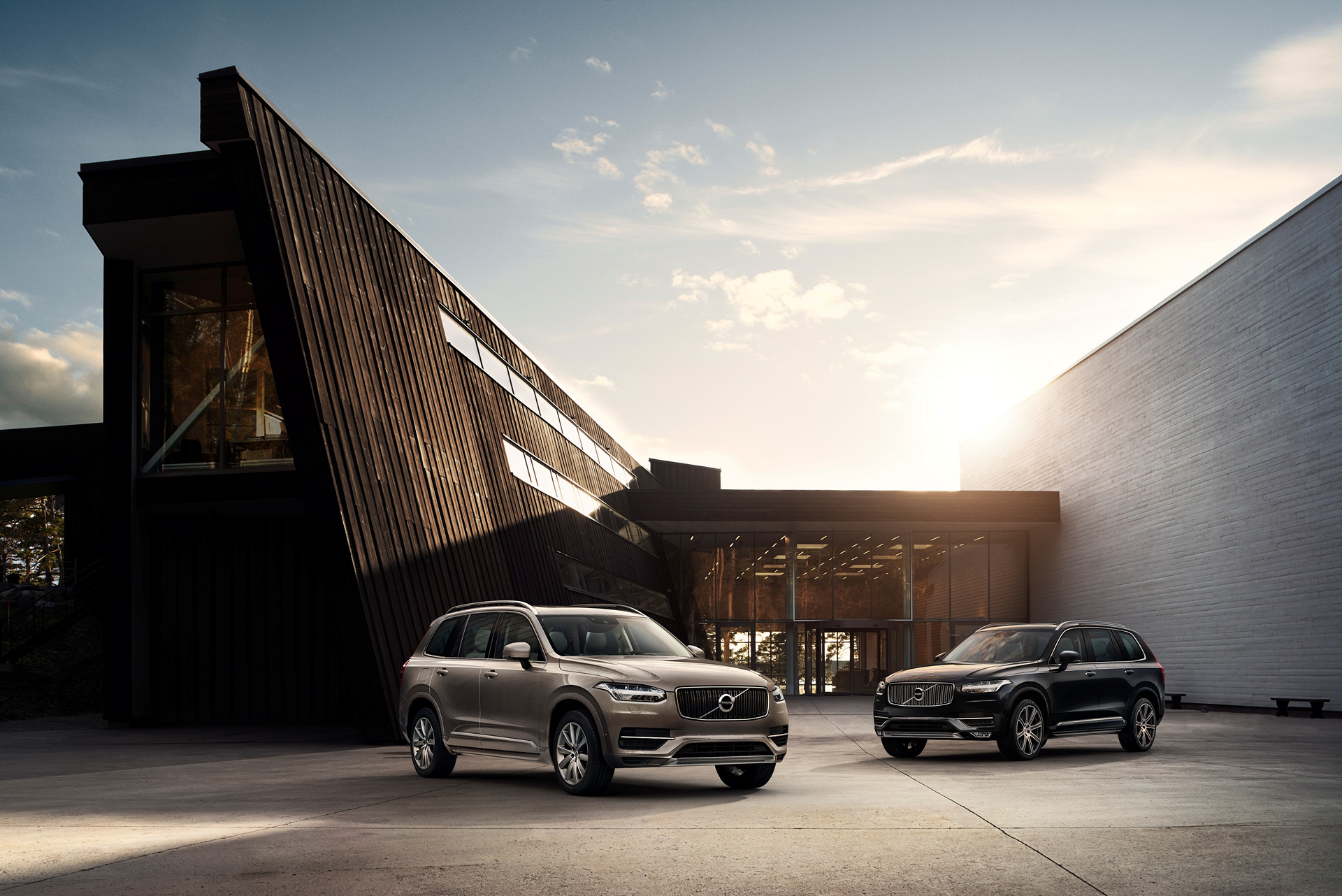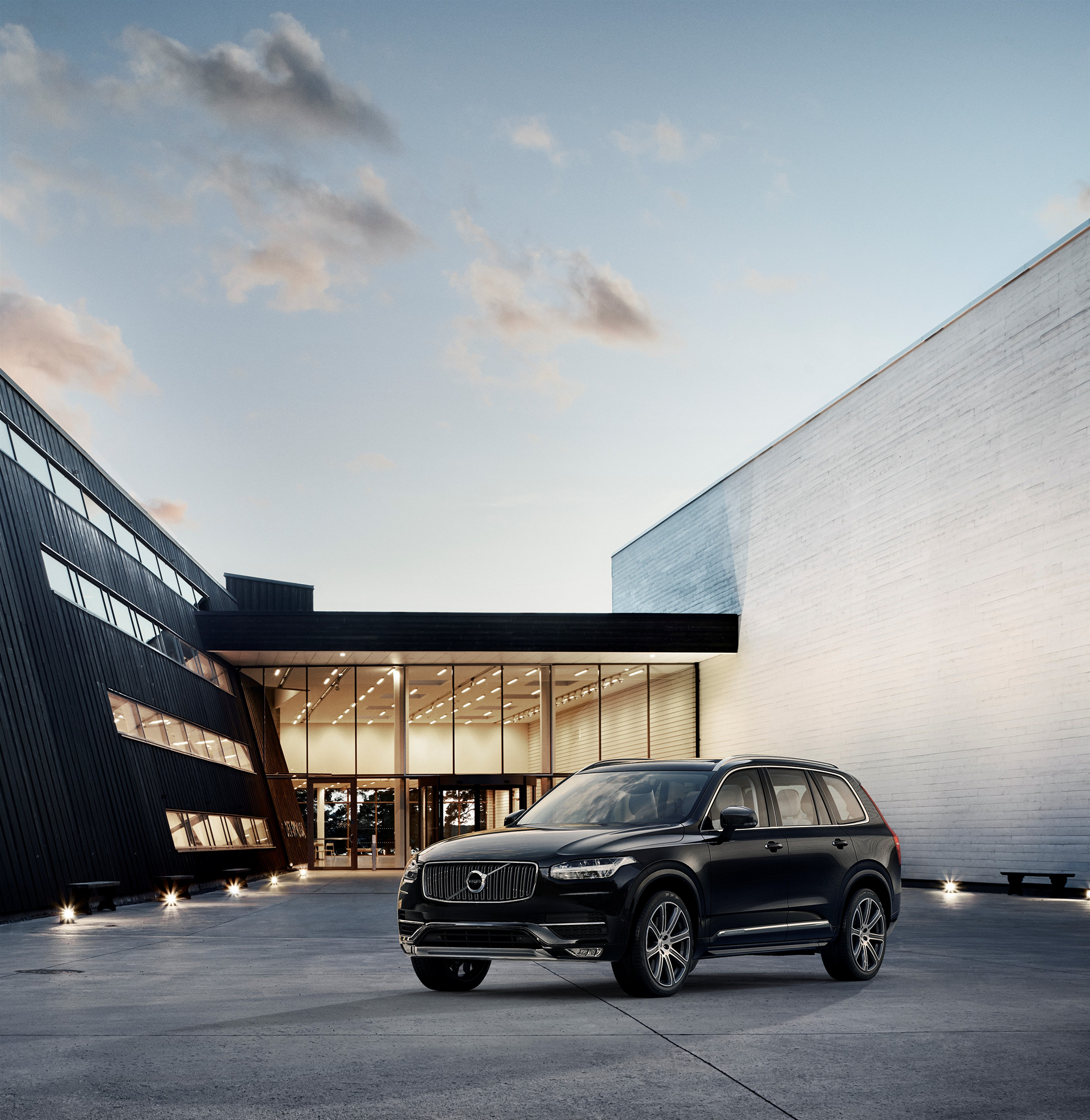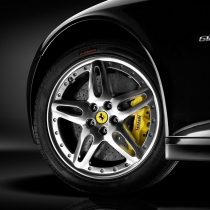Volvo boldly drives to the pinnacle of the luxury market with its all-new XC90 for 2016. This revolutionary next-generation luxury SUV artfully combines all of Volvo’s traditional attributes – safety, performance, refinement and technology – while accelerating each to new levels of world-class excellence.
The XC90 is part of an $11 billion investment program by Volvo to develop the new Scalable Product Architecture (SPA) modular chassis technology. Developed in-house by Volvo, SPA gives designers and engineers more freedom to create alluring styling, improved drivability, world-first safety features, the latest connected car technologies and enhanced interior space.
SPA features a groundbreaking new electrical architecture that significantly boosts the XC90’s “intelligence.” The architecture is designed for sophisticated functions in rapidly developing areas including microprocessor, sensor and camera technology that work to support the driver in avoiding accidents.
For the 2016 introduction, the XC90 is available in three trims: Momentum, Inscription and R-Design. Each offers a unique personality with visually distinctive exterior and interior styling treatments plus different levels of individual features.
- Momentum is expected to be the most popular XC90 to meet the needs of most luxury SUV customers.
- Inscription offers exclusive luxury features that focus on craftsmanship, comfort and elegance.
- R-Design is for those who seek a more sporty, dynamic and expressive SUV with increased visual appeal and an enhanced attitude.
Dramatic New Volvo Design
With the rare opportunity to create a completely new vehicle on a new platform, Volvo’s designers gave the XC90 great proportions. One area seen as the real measurement of luxury vehicles is called the “dash-to-front axle.” The longer space between the A-pillar and front wheel arch helps to create the impression of a more luxurious vehicle.
Another important aspect of the design was to ensure a recognizable and memorable “face” for the XC90. The powerful front appearance sets the tone by distinguishing itself from competitors while proudly announcing that this is a Volvo. Designers focused on key elements including lighting and grille styling.
LED daytime running lights are evocative of “Thor’s Hammer” presenting a unique and memorable design element. The grille and Ironmark including the signature diagonal slash, have been proportioned for a larger grille. Lower fascia character lines add drama to the visual appeal and help form a confident personality.
While the new XC90 features a thoroughly modern and contemporary design, three signature elements are based on classic Volvo design cues:
- Strong shoulders run from the nose along the sides of the vehicle to the tail.
- The Volvo Ironmark is updated with the arrow aligning with the diagonal grille slash.
- Taillights with the striking LED light guide emphasize the vertical breadth of the body’s shoulder line creating a strong identity.
Adding to the XC90’s allure is the fact that each trim level presents an immediately recognizable yet unique identity. Momentum, Inscription and R-Design feature distinctive grille treatments while color enhanced lower body moldings, lower front spoiler cues, roof rails design and lower rear “skidplates” contribute to individual model character.
Volvo’s Drive-E Power Play
The distinctive character for the XC90 continues under the hood with Volvo’s brilliant Drive-E powertrain that delivers an uncompromising blend of lightweight design, exhilarating performance and fuel efficiency.
All XC90s feature a state-of-the-art 2.0-liter four-cylinder supercharged and turbocharged engine that puts out a strong 316 horsepower and stout 295 lb.-ft. of torque between 2,200 rpm and 4,500 rpm. This compact powerplant design contributes to impressive fuel economy, reduced emissions and agile handling.
A supercharger adds torque in low and medium speeds until the turbocharger takes over. The supercharger is then disengaged to help reduce friction and improve efficiency. Turbocharging compresses air entering the combustion chambers to deliver more power. The result is that this smaller engine performs like a larger one. Volvo’s expertise in forced induction dates to its first series-production turbocharged car engine in 1981.
The second key element of Drive-E is the XC90’s standard eight-speed “Geartronic” automatic transmission that features two overdrive speeds to help save fuel plus a lock-up function that bypasses the torque converter to reduce energy consumption. It offers the driver the choice to select fully automatic operation or to shift manually via the console-mounted shift lever or by using the R-Design’s steering wheel paddles.
All XC90s are fitted with Volvo’s electronically controlled All-Wheel Drive with Instant Traction™. This design employs an efficient, compact and lightweight fifth-generation coupling that distributes the engine’s power between the front and rear wheels.
Under normal dry conditions, nearly all of the power is distributed to the front wheels for optimal fuel efficiency. The system continuously monitors the need for power to the rear wheels and can instantly redistribute up to 50 percent of the engine’s power. At a standstill, full all-wheel drive is always engaged to prepare for maximum traction during acceleration.
Adjustable Drive Mode Settings allow the driver to select different performance characteristics using a rotary knob conveniently mounted on the center console.
- Comfort mode raises the vehicle by 0.4 inches (10mm) to increase suspension travel comfort.
- Eco mode calibrates engine, transmission and climate control for maximum fuel efficiency. An eco-coast feature operates when the accelerator is released above 40 mph (64 km/h). On XC90’s equipped with the available 4-corner Air Suspension, it will lower the chassis by 0.8 inches (2cm) at speeds above approximately 43 mph (70 km/h) for improved aerodynamics.
- Dynamic mode provides a more sporty driving experience with quicker response of the throttle and transmission with higher speeds for each gear change. When equipped with 4-corner Air Suspension, it will lower the chassis by 0.8 inches (2cm) at speeds above approximately 84 mph (135 km/h) for improved aerodynamics.
- Off-road mode operates at speeds below 25 mph (40 km/h) and is disengaged when the vehicle travels faster. The differentials are locked, Hill Descent Control is automatically activated, steering is set to the comfort mode, the engine and transmission are optimized for traction, Electronic Stability Control is set to Traction/Sport and the Stop/Start function is deactivated. If equipped with 4-corner Air Suspension, ground clearance increases by 1.6 inches (4cm).
- Individual mode allows the driver to set personal preferences for steering response, drivetrain dynamics, brake pedal feel and more.
New Volvo-Engineered Chassis
The XC90’s innovations continue underneath with a new chassis engineered to deliver supreme ride comfort and outstanding control. Most suspension components in the front and rear are made of aluminum to reduce weight and optimize performance.
A new double-wishbone front suspension design attaches to the body by two transverse links. Handling and road holding are improved compared to the previous MacPherson strut design providing more neutral balance, minimum roll and no unwanted understeer. This design also helps to counteract torque steer.
The integral axle rear suspension is also completely new. This advanced design allows handling characteristics to be individually tuned. On XC90s without the optional 4-corner Air Suspension, a strong, lightweight and compact composite transverse leaf spring replaces traditional coil springs. (Note that the current generation Chevrolet Corvette uses a similar design.)
Four-corner Air Suspension offers superior levels of ride comfort, handling and road holding. An electronically controlled damping system called Four-C replaces traditional dampers or shock absorbers. This system uses a computer-controlled air chamber at each wheel that constantly adapts to changing road conditions. The hydraulic characteristics of the dampers are measured and controlled with calculations up to 500 times per second for the best possible ride.
Automatic leveling, including the Air Suspension, keeps ground clearance level whether the XC90 is transporting only the driver, or a full load of passengers or cargo. Ride height is automatically lowered at higher speeds while an easy ingress/egress mode allows the vehicle to be lowered 1.6 inches (4cm) for greater convenience. The driver can push a button in the cargo compartment to lower the ride height by 2.0 inches (5cm) when parked for easy loading or to hitch a trailer.
XC90’s Visual Assistance Systems
Different levels of parking aid systems are available as part of XC90’s extensive safety features. Rear Park Assist with an audible alert and rear park assist camera are both standard. The camera, hidden under the tailgate handle, provides a view behind the driver on the center display screen. Guidelines on the screen show the path of the rear wheels according to the steering wheel angle.
In addition to convenience, the rear camera is a valuable safety feature. Volvo’s research shows that in the U.S. 50 or more children are hit by a vehicle every week when backing up. Forty-eight are treated in hospital emergency rooms and at least two children are fatally injured each week. The predominant age of victims is one year old. More than 60 percent of these incidents involve a larger size vehicle such as a truck, van or SUV. And in more than 70 percent of these incidents, a parent or close relative is behind the wheel.
Park Assist Pilot is an evolution of the system currently offered on the S60 and V60. It adds four front and two side sensors to Park Assist and can take over the steering completely when parking (the driver stays in control of the accelerator, brakes and transmission shifting). The system makes parking extremely easy and can steer the car into parallel and perpendicular parking spaces
On the new XC90, and additional level of parking support is available with the 360-degree camera. With this new option, the driver can see a bird’s eye view of the car’s surroundings (up to 6 mph or 10 km/h) via a virtual picture of the car on the center screen display. The birds-eye view is generated by four hidden cameras located in the lower part of the front Volvo badge, both side mirrors and the tailgate.
The four views are digitally processed to create an uninterrupted view of the surroundings, as seen from above the car. By sweeping up or down over the touchscreen, the driver can select a view from the front or rear camera only. This provides an additional visual perspective when vision is obstructed such as when driving into a street or junction, when leaving a parking lot in a building or when maneuvering into a tight parking space.
Front park assist is included with the optional Park Assist Pilot. Four ultrasonic sensors integrated into the lower front grilles measure the distance to obstacles just over 2.5 feet (0.8 m) during speeds under 6 mph (10 km/h). The distance to each sensor is displayed graphically on the center display. A warning tone alerts the driver as the XC90 gets closer to an object. At 11.8 inches (0.3 m) the sound becomes constant.
The Interior: A Scandinavian Sanctuary
The XC90’s all-new interior is the most luxurious ever created for a Volvo. Developed according to the “Designed Around You” strategy, emphasis is placed on the driver and passenger’s needs. Since the new XC90 will be popular with families, attention was focused on passenger comfort, including those riding in the second and third rows, clever use of space, versatility and ease of use.
Long considered the best and most comfortable seats in the industry, Volvo has introduced an entirely new generation of seats for the XC90. To make the backrests as slim as possible and increase legroom in the second row, a completely new frame and seatback have been developed. The new seat design also contributes to protective safety (covered later in this overview under IntelliSafe).
Second-row seats are designed for comfort and maximum flexibility. Each seat is contoured on the seatback and cushion for added support. Backrests recline individually plus each seat can slide individually to provide either more legroom or luggage space. Seatbacks are configured 40/20/40 to accommodate long items via the folding center seat while retaining two full-sized outboard seating positions.
An integrated child booster cushion is an option for the second-row center position. Since the seat slides, it can be positioned conveniently closer to the front seats for better access to the driver and front passenger. The seat is designed for children weighing from 33 to 79 lbs. (15 to 36 kg).
The standard four-zone climate system offers additional comfort and control for second-row passengers. A touchscreen panel on the floor console allows outboard passengers to adjust temperature and fan speed individually. Optional heated rear seats are also controlled from the touchscreen. Four-zone ECC also offers the ability to cool the front glovebox to keep beverages chilled.
XC90’s standard third-row seat offers uncompromised comfort and space with class leading 31.9-inches of legroom. The two individual seats are generously proportioned and include full-sized seatbacks like those in the second row. A separate air conditioning unit is included for quick cooling. Third-row cushions stay in place when the seats are folded offering a completely flat load floor.
To pay homage to Volvo’s heritage of safety, the message “Since 1959” has been engraved onto the tongue of the front seatbelt buckles. This highlights the year that Volvo pioneered the three-point safety belt, reminding the driver and passenger of this significant milestone whenever they buckle up.
The steering wheel is designed to harmonize with the overall design and image of the XC90. Two color families match the interior palette: a Charcoal leather-wrapped wheel is matched with Charcoal interiors while Charcoal and Blond is matched with Blond interiors.
R-Design’s steering wheel features a four-split design clad with Charcoal perforated leather. It includes silk metal accents and an “R-Design” emblem. Steering wheel shift paddles are also included.
Beautiful interior inlays cover a generous surface of the dashboard, center console, tunnel console and on the doors. Selections include Cross Brushed Aluminum standard on Momentum, Linear Walnut Wood on Inscription and Metal Mesh Aluminum for R-Design. Dark Flame Birch inlays are optional on Momentum while R-Design can be trimmed with optional Carbon Fiber inlays.
Standard Keyless Entry and Drive means that there is no physical slot to insert the key. The driver starts the engine by turning the Start knob on the center console while depressing the brake pedal.
To make life easier, keyless entry and hands-free power tailgate are also included. Simply approach the XC90 with the keyfob in a pocket or purse and open a door. The dedicated door handles with “invisible” buttons also include puddle lights. To open the tailgate, wave a foot under the left side of the bumper and the tailgate will open automatically. This added convenience feature makes it easy to load cargo when hands are full.
The cargo area offers generous space and clever load features. Maximum cargo space with the second- and third-row seats folded is a generous 85.7 cu. ft. Convenient access is provided via a power-operated tailgate with a soft-close feature. A semi-automatic cargo cover retracts halfway when its handle is depressed for easy loading. A hidden storage compartment under the load floor includes a divided storage tray for small or valuable objects.
Advanced Sensus Connect Technology
The XC90’s new Sensus user interface is the most modern in-car control system on the market today. Volvo’s interior design goal was to create a safer environment by adding a more intuitive interface that was both simple to operate and aesthetically elegant.
Sensus provides comfortable access to a wide selection of cloud-based applications. The in-car possibilities include Internet radio, connected navigation, finding and paying for parking, seamless music streaming, the ability to mirror and use Apple and Android devices in the touchscreen display, a hotspot for using a tablet in the car and much more.
Designers realized the paradox in adding more convenience features means that more buttons are needed to operate them. The typical driver control system in other premium vehicles can include up to 30 buttons spread across the dashboard, making it challenging for the driver to locate and operate.
The key to a less distracting environment was to remove buttons instead of adding them. Designers reimagined the center console with a touchscreen display whose controls can be accessed not only through physical contact, but via voice activation and steering wheel controls.
For the all-new XC90 most of the buttons have been replaced by a sleek and elegant 9-inch control panel. This large touchscreen offers a vertical or portrait format with less scrolling, setting it apart from competitors with horizontal screen positions. Light Control Film anti-reflective coating offers deep contrast while keeping glare and reflections to a minimum. Liquid Crystal Display (LCD) technology delivers a very dense pixel ratio making it one of the highest resolution screens in a vehicle.
Advanced touchscreen technology employs an infrared film that emanates from the perimeter of the screen. It knows where the user is touching since a finger breaks the infrared plane. The advantages include crisp picture quality, less wear on the screen since there’s no need to apply pressure to the surface, plus the ability to operate the system while wearing gloves.
Volvo’s design differs from competitors in the method that information has been organized so the driver can understand it a meaningful and highly intuitive way. The need for a separate external control device to access information – a joystick, knob or floor console-mounted touchpad – has been eliminated.
The central control panel also interacts with an adaptive digital instrument cluster located behind the steering wheel, while vital information can be projected onto the lower part of the windshield with the available Head-up Display (HUD).
Information on the center touchscreen is organized in a stack of four “tiles,” each displaying a key functionality:
- Navigation
- Media
- Phone
- User-defined Title (such as Apple CarPlay™)
A thin information band is located above the tiles (phone signal strength, clock, etc.) while digital climate information is located below. Feature or app “buttons” can be relocated and easily organized on the screen.
When one of the tiles is activated, it immediately expands, offering more detailed information. The other tiles compress but are still visible. Progression of information is exceptionally user-friendly since there is no need to flip back and forth via menu trees.
The advantages of a vertically positioned screen include creating an environment to present information in a logical manner, no scrolling to view menus more easily, navigation maps can be displayed in a more natural way to see more of your route as you drive, and menus can be accessed via swiping the home screen left or right.
Eight actual physical buttons on the center console below the touchscreen, grouped for ease of use, operate the hazard lights, available heated windshield, heated rearview mirrors and rear window, left and right buttons to move forward or backward, temperature sensor and glovebox open switch.
The instrument cluster in front of the driver offers the freedom to arrange pertinent information for ease of use. The screen is glossy black when not in use and when activated, it presents a dramatic start-up sequence.
A graphical 12.3-inch display replaces a traditional dashboard in all models. This display includes two large round gauges with an information area in-between that can differ in size depending on the information being projected. For example, when navigation is used, the info section becomes larger and the two round gauges are smaller.
Sensus Audio and Navigation Systems
Two levels of audio systems are designed to deliver the best possible sound quality with acoustics specifically optimized for the XC90’s interior. The standard Sensus High Performance Audio system includes a six-channel amplifier that delivers 330 watts to 10 speakers. This produces a top-quality sound experience for all passengers including those riding in the third row.
Available Premium Sound by Bowers & Wilkins is one of the best quality audio systems in the automotive market. Bowers & Wilkins is a premium company that’s so respected in audio circles it’s the preferred audio brand for the famed Abbey Road Studios.
In the XC90, this system delivers an astonishing 1,400 watts to 19 speakers strategically located throughout the cabin. “Room Transformation” technology developed with the Swedish software specialist Dirac Research makes it possible to recreate the acoustics of a specific room inside the cabin. Drivers can select three different room modes: “Studio,” “Individual Stage” and “Gothenburg Concert Hall.”
A newly designed and extremely thin subwoofer is included, which is integrated into the architecture of the vehicle, located by the rear wheel arch. Thanks to an opening in the wheel arch, the subwoofer can pulse more air, which enables extremely low bass tones down to 20 Hz, providing sound quality similar to that of a movie theater.
Thanks to the large portrait format center screen, 3D graphics and the ability to utilize natural speech voice control, the XC90’s navigation system is extremely user friendly.
Standard Sensus Navigation maps are clearly displayed in the center display. Additional guidance is provided by enhanced map detail in the 12.3-inch digital dashboard, plus the optional heads-up display. Free lifetime map upgrades can be performed using the USB port.
The driver and front passenger have access to Volvo’s fully integrated, connected navigation system with all its functions including SiriusXM Travel Link.
Real Time Traffic will get drivers to their destination in an easier and stress-free way.
Apple and Volvo Cars are joining forces to make Apple’s widely used operating system available to XC90 drivers. Apple CarPlay™ makes it possible to seamlessly integrate an iPhone (version 5 or later) and access selected functionalities and apps via the large center touchscreen. The iPhone can be controlled via the touchscreen or by Siri voice commands via the XC90’s audio system.
The all-new XC90 will be the first Volvo to offer this functionality and CarPlay can be retrofitted to any 2016 XC90 that was produced prior to availability.
A similar interface for Android phones in under development and will be introduced at a later date. The integration of Android Auto™ promises to add yet another dimension to the XC90’s in-car experience. Android Auto will bring features and services familiar to Android smartphone and tablet users directly into the car.
Android Auto will provide access to Google Search, Google Maps, Google Play Music and specially adapted third-party applications such as Spotify. All phone-based applications can be controlled via voice or steering wheel controls or the car’s touchscreen ensuring the entire interaction with Android Auto content is both safe and easy.
IntelliSafe Safety Technology
The new SPA architecture, with its increased strength and new ground-breaking electrical system, has allowed Volvo to create new innovative features, reinforcing its leadership in the safety area, and supporting its Vision 2020, which states that by the year 2020, no one should be killed or seriously injured in a new Volvo.
The driver is at the core of Volvo Cars’ holistic approach toward safety, which is based on real traffic situations. The driver and passengers are embraced by solutions that are designed for intelligent absorption of energy in various types of collisions. Camera, radar and sensor technologies are extended to detect more objects around the car and to offer support at higher speeds and in more situations, like intersections.
The all-new XC90 offers the most comprehensive and technologically sophisticated standard safety package available in the automotive industry. The XC90 features existing safety technologies that have revolutionized safety for SUVs like the world first application of Roll Stability Control. To this day, 13 years after the first introduction, the XC90 is still one of the only SUVs on the market that can actually prevent a rollover accident, not just protect for it in case it occurs.
- Additional IntelliSafe safety technologies include:
- Electronic Stability Control
- Understeer Control Logic – minimized understeer
- Engine Drag Control
- Advanced Stability Control with Torque Vectoring
- Road Sign Information
- Driver Alert and Lane Departure Warning
- Automatic braking after collision – After a collision where the safety belt pre-tensioners or an airbag have been activated, the brakes are automatically activated to help prevent second or tertiary collisions.
City Safety, from the introduction of the all-new XC90 and other new Volvos to come, the term is used as an umbrella name for all collision avoidance functionalities, previously known as City Safety but also as Collision Warning with Full Auto Brake.
The importance of this ground-breaking and revolutionary active safety technology is illustrated clearly in U.S. studies that indicate 50 percent of drivers involved in collisions have not tried to avoid the collision.
A compact combined radar and camera unit behind the windshield is designed to detect vehicles, cyclists and pedestrians, both day and night. If City Safety judges that a collision is imminent, it will warn the driver with a head-up light in the windshield, an audible warning sound, as well as a short, light brake pulse, and at the same time prepares the brake system and safety belts for immediate efficiency. Should the driver not react or react too late, City Safety will brake the car autonomously.
City Safety is active at all speeds over 2.5 mph (4 km/h) and will avoid or mitigate three types of collisions with vehicles, cyclists, and pedestrians:
- Avoiding or mitigating collisions with other vehicles – Up to a relative speed difference of 31 mph (50 km/h), accidents with other cars can be avoided. At higher speed differences, the collision is mitigated. The driver can take control and brake and/or steer away at any time. If a collision is imminent, the safety belts and brakes are prepared – so if the driver takes action and brakes, they deliver immediate and maximum performance.
- Avoiding collisions at intersections is a World First. The XC90 is the first car in the world with technology that features automatic braking if the driver turns in front of an oncoming car. This is a common scenario at busy city crossings as well as on highways, where the speed limits are higher. The all-new XC90 detects a potential crash and brakes automatically in order to avoid a collision or mitigate the consequences of a crash.
- Avoiding or mitigating collisions with cyclists. If a cyclist swerves into, or crosses the path of the car, or is stationary in the path of the car, the XC90 warns the driver and will brake automatically if the driver does not act. A collision with a cyclist can be avoided at speeds up to 31 mph (50 km/h) and a speed differential* between the car and the cyclist of 25 mph (40 km/h). At higher speed differentials, the collision is mitigated.
- Avoiding or mitigating collisions with pedestrians. If a pedestrian moves into, or crosses the path of the car, or is stationary in the path of the car, the XC90 warns the driver and brakes automatically if the driver does not act. A collision with a pedestrian can be avoided at speeds up to 28 mph (45 km/h). For speeds between 29 – 50 mph (46 – 80 km/h) the collision is mitigated. Detection of cyclists and pedestrians at night is a new functionality of City Safety on the XC90.
Run-off Road Protection is another World First. Accidents during which the vehicle runs off the road are common, and occur due to different causes, such as driver distraction, fatigue or poor weather conditions. For example, half of all traffic fatalities in the U.S. are road departure accidents, while in Sweden, single-vehicle accidents involve one third of all fatal and severe injury crashes with passenger cars.
Volvo is deeply troubled by these statistics. Even though there are currently no regulatory or rating tests to examine a car’s ability to handle run-off road accidents, the company has taken the lead to develop the technology to protect occupants should these situations occur.
Volvo Cars developed Safe Positioning to address these situations. The Safe Positioning capability means that in a run-off road scenario, the new XC90:
- Detects what is happening and the front safety belts are tightened to keep the occupants in position. The belts are firmly tightened as long as the car is in motion.
- To help prevent spine injuries, energy-absorbing material between the seat and seat frame cushions the vertical forces that can arise when the car encounters a hard landing in the terrain. The solution is capable of reducing the vertical occupant forces by up to one third. This counteracts spine injuries, which are serious and relatively frequent consequences of these situations.
Road Sign Information uses the camera unit behind the windshield to recognize a large number of traffic signs (such as speed limits but also prohibition signs) and display them in the lower part of the speedometer or on the Head-up Display as a convenient reminder for the driver.
Seats, Seat Belts and Airbags – The newly designed seats in the XC90 have extremely strong frames, and are made of different steel grades. The front seats are capable of absorbing high-energy loads even in severe accidents – another World First. Thanks to this new design, high vertical loads pushing the human body downward in several types of accidents are absorbed by the front seat’s foam and frame. The solution is capable of reducing the vertical occupant forces by up to one third.
The new front seats also offer the latest development of Volvo’s WHIPS Whiplash Injury Protection System.
Three point safety belts with seat belt pretensioners are included for all seven occupants. The upper safety belt mounting points for the third row have a special design to give the best possible protection over the shoulder.
Airbags complement the protection offered by the safety belts. They are located in the front as well as integrated in the side of the front seat backrests. Passengers in the second and third seat rows are protected in an optimal way by the Inflatable Curtains integrated in the longitudinal part of the roof, above the doors and the rearmost side windows. XC90 also features a knee airbag on the driver side.
Stability and Brake Systems – DSTC is now be called ESC, or Electronic Stability System. Volvo’s system has the same functions as previously, which are individually tuned and calibrated for each Volvo model.
Automatic brake activation – collisions. Should a collision occur and the safety belt pretensioners or an airbag have been activated, the car’s brakes are automatically activated in order to help avoid more damage after a collision.
The brake pedal has a completely new construction. When the sensors that trigger the safety belt pretensioners and frontal airbags sense that a frontal collision is taking place, the brake pedal is released by a pyrotechnical device. That way, the risk for injuries to the right foot and leg is reduced.
IntelliSafe Surround is the new name grouping for some optional driver support features:
BLIS with Cross Traffic Alert and Rear Collision Mitigation – Active at speeds above 7 mph (12 km/h), the Blind Spot Information System uses a radar unit inside each corner of the rear bumper of the car and measures the distance to vehicles coming from behind.
- The driver is warned by a light in the side mirror about vehicles, which are about to pass.
- The light is constant if a vehicle is approaching rapidly from behind in the lanes to the left or right of the car at a distance up to 230 ft. (70m).
- If the driver ignores the light and turns on the indicator to change lanes, the warning light starts to flash.
- System can be de-activated via the center control panel.
Cross Traffic Alert – This feature makes it considerably easier to back out of parking spaces as it detects and warns for vehicles, cyclists, and pedestrians approaching on either side.
- Emits an audible warning as well as displaying a visual warning on the center screen.
- Active at a distance of up to 98 ft. (30m) for vehicles. Cyclists and pedestrians at shorter distances.
There are two changes/enhancements versus the radar-based BLIS on other Volvos:
- The location and function of the warning light differs.
- Addition of Rear Collision Mitigation.
- If the XC90 is at a standstill and another vehicle is about to hit it from behind, the system activates the pre-tensioners just before collision, and then applies full auto braking to keep the vehicle from being pushed into another car or into an intersection, potentially an even more dangerous situation.
IntelliSafe Assist is the new name grouping for the following features, which make use of the camera and radar integrated behind the windshield:
Adaptive Cruise Control (ACC) with Pilot Assist – This is a great feature for driving on highways or in a daily commuting situation. ACC helps un-complicate a driver’s commute by creating a less stressful environment, particularly in slow, stop-and-go traffic.
- This is cruise control with the added function that the speed is adapted automatically to slower vehicles in front of the XC90. The system uses the radar unit in the windshield, and if the vehicle in front slows down and stops, Adaptive Cruise Control will make the XC90 stop comfortably behind it, and then keep the brakes engaged. If the lead vehicle stops for less than six seconds, the XC90 will automatically start following the car in front as it takes off again.
- The driver can choose between five different time gaps to vehicles in front via buttons on the steering wheel and graphics in the driver display.
- Other functions and controls are the same as for cruise control. The driver can choose to turn ACC on or off at any time.
- When the XC90 is adapting the speed to a vehicle in front above 43 mph (70 km/h), and the driver wants to overtake a vehicle, the Adaptive Cruise Control briefly accelerates the car towards the vehicle in front of it if the turn indicator is used.
Pilot Assist function – Adaptive Cruise Control is supplemented by new Pilot Assist. This means the XC90 can keep the set speed and distance to a vehicle in front, and also support the driver in keeping the car within the lane. It relieves the driver from the need to constantly adapt the speed to the vehicle in front and adjust the steering to keep within the lane in low speed traffic.
- Occurs at “queue speeds” below 30 mph (50 km/h).
- This is achieved by means of the camera and radar in the windshield, which monitor the car’s position in relation to visible lane markings and a vehicle in front, as well as light steering adjustments, if the car is coming close to passing a lane marking without the indicator being used.
- Will keep the car’s position in its lane by using light steering torque, in relation to visible lane markings and a vehicle in front of it. Driver must have his hands on the steering wheel.
- If Pilot Assist is not activated under 30 mph (50 km/h), Adaptive Cruise Control will still keep the speed and distance to the vehicle in front, but there will be no steering corrections.
Distance Alert – This system helps reduce the risk for collisions with other vehicles, and offers a less stressful driving environment with the knowledge that the XC90 will warn its driver if it comes too close to a vehicle in front.
- Distance Alert monitors the XC90’s distance to the car in front at speeds above 16 mph (30 km/h) when Adaptive Cruise Control is not in use.
- Distance Alert can be turned off in the settings menu via the center display.
- One of five time gaps to vehicles in front can be set with the same buttons on the steering wheel just like the Adaptive Cruise Control.
- If the driver comes closer to a vehicle in front than the set time gap, an amber warning light is displayed on the windshield, from head-up LEDs on the dashboard or in the form of a symbol if the car is equipped with the full graphic Head-up Display.
Lane Keeping Aid – This system actively aids the driver by steering the XC90 back if it’s straying toward another lane because the driver has lost concentration or for some other reason is not in control. The system attempts to get the driver to intervene through clear warnings if the car approaches a lane marking.
- This feature helps the driver keep the vehicle in its lane by gently steering it back to center if it’s about to cross a lane marking. The intervention occurs if the vehicle “senses” that the driver is not driving ‘actively’ – for example, not using the turn indicator.
- The system uses the camera and radar in the windscreen and it’s dependent on visible lane markings.
- Highly personalized system can be turned on or off in the center display menu, while audible or haptic (vibration in the steering wheel) warnings can be chosen as well.
- If the steering intervention is not enough, or if the driver steers into the other lane, he/she is warned by vibrations in the steering wheel or a warning sound.
Price
Recommended retail price (MSRP) starts from $43,950


